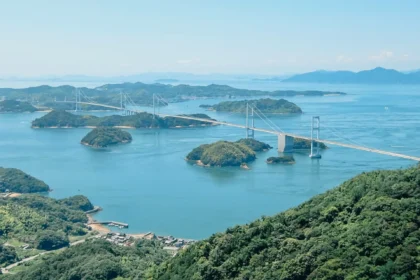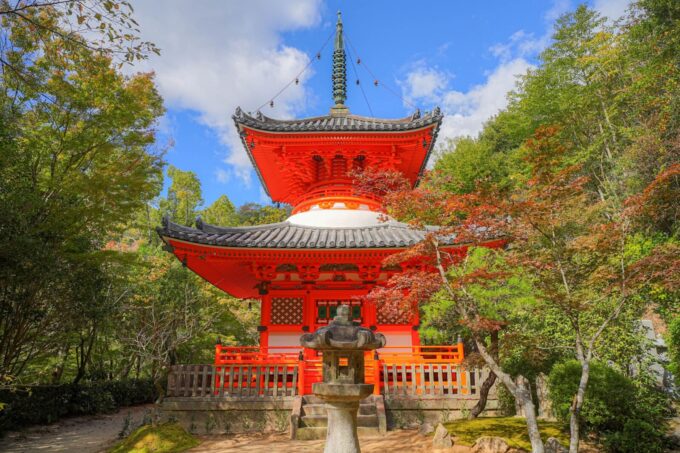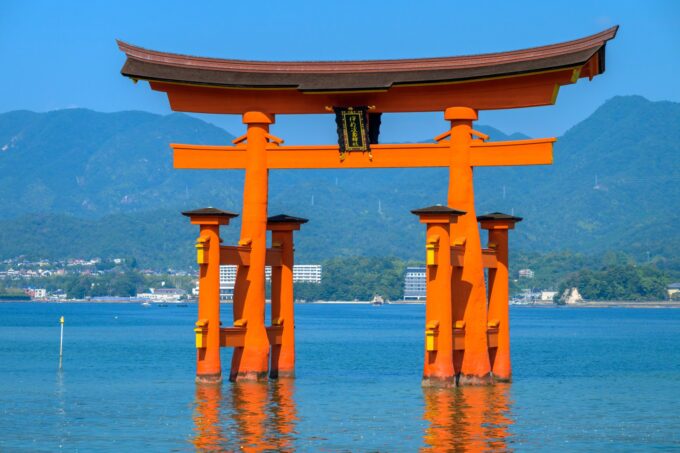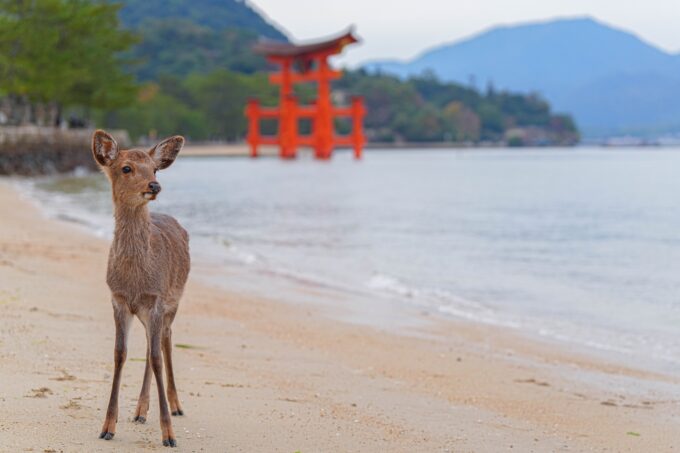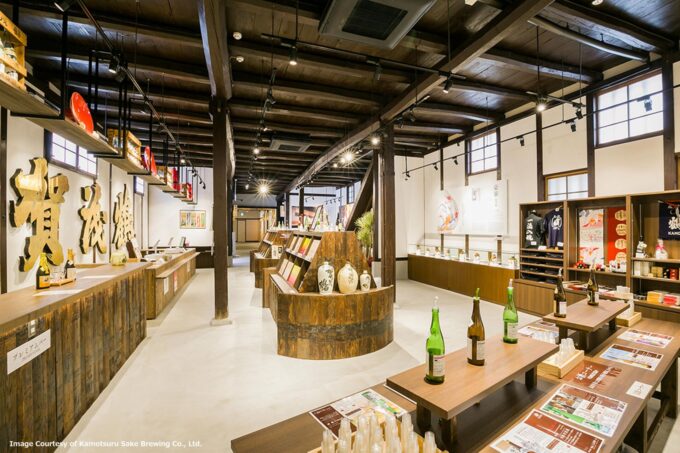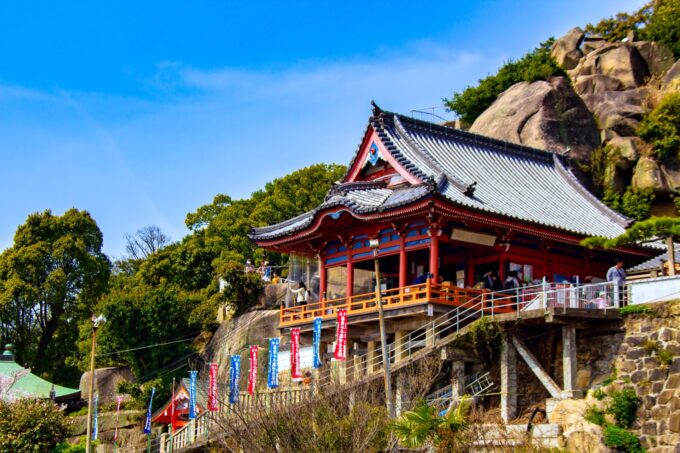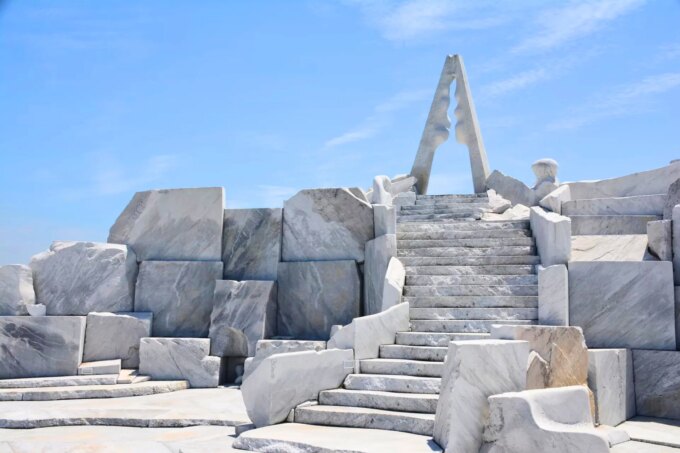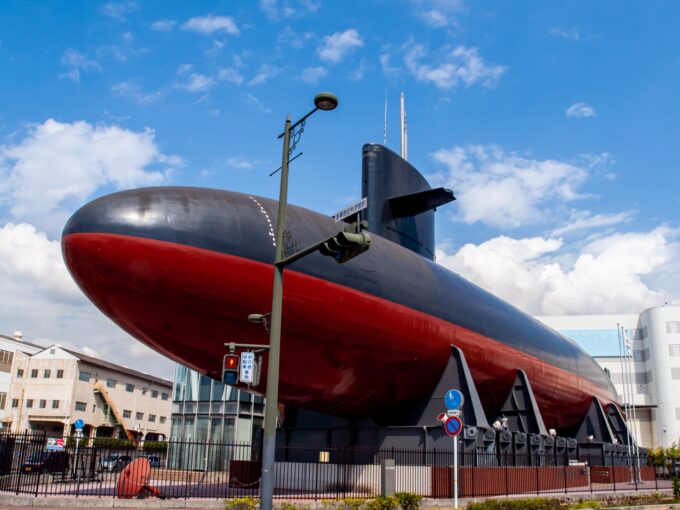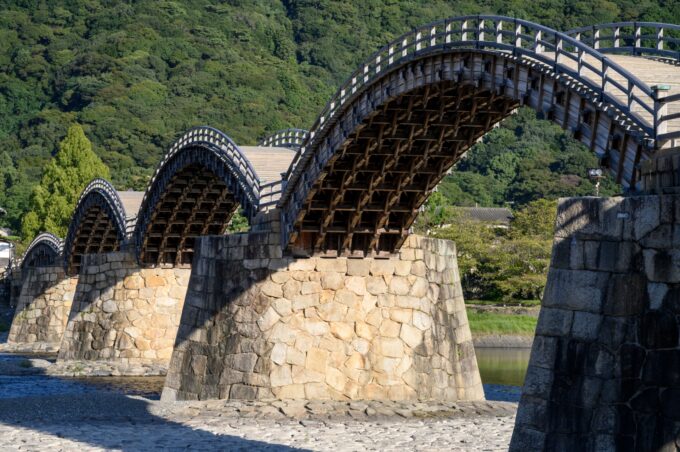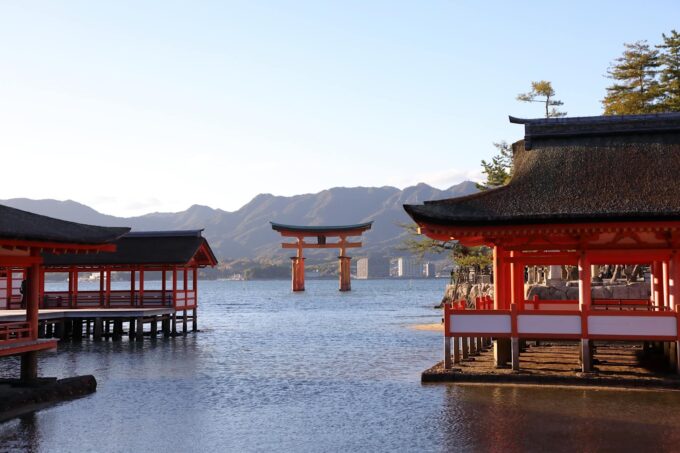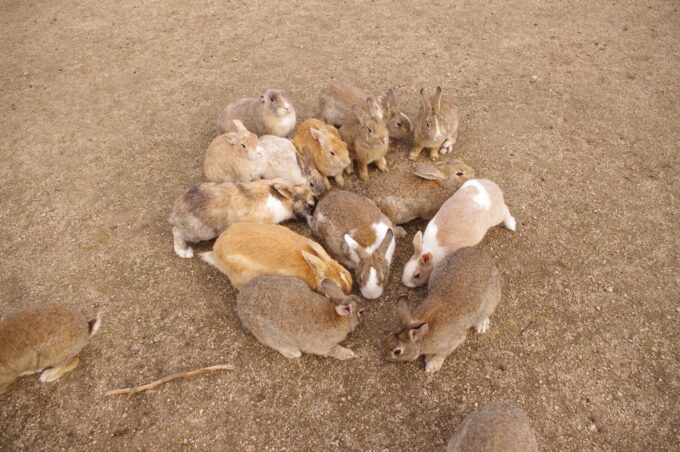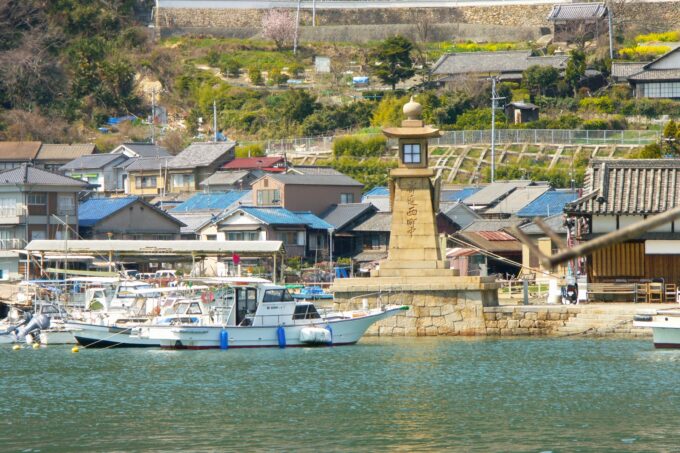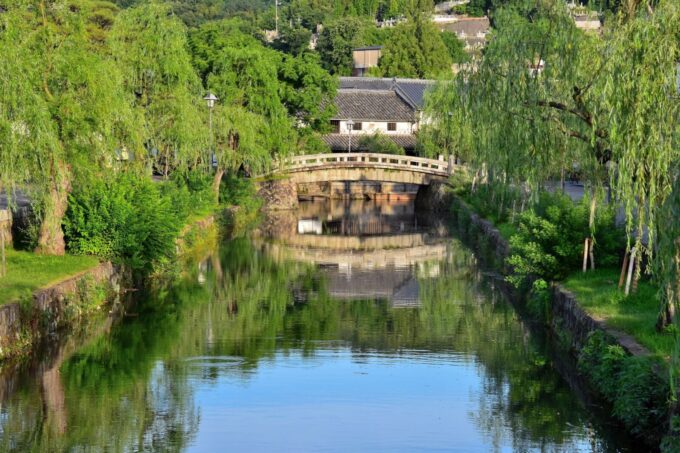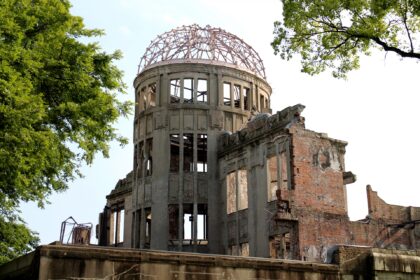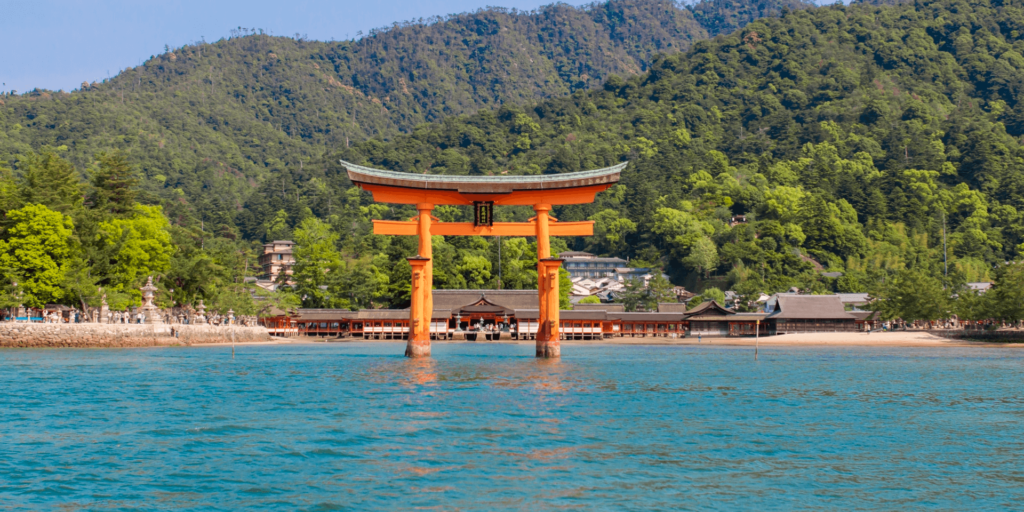
Hiroshima occupies a hugely important place in modern history while also being one of Japan’s most liveable cities and access point to the always popular island of Miyajima and expansive region of the Seto Inland Sea. On this page you will find the following information:
-- 30 Things to Do In & Around Hiroshima
-- Best Tours and Itineraries Around Hiroshima
-- Best Areas to Stay When Visiting Hiroshima
On August 6th 1945, the first atomic bomb was dropped on Hiroshima. Followed three days by the bomb dropped on Nagasaki, the use of nuclear weapons on these two cities brought the Second World War to a close while heralding a new, potentially apocalyptic reality for all people. The total number of dead in Hiroshima is unknown, however by December 1945 – some five months after the bomb fell – it is estimated that around 140,000 people had died in Hiroshima from the bombing and its aftermath (and notably more since that time). It is tragic heritage that cannot be told through statistics and facts, and a history that transcends Japan and belongs to us all – making the journey to Hiroshima along with Nagasaki, harrowing yet essential for many visitors.
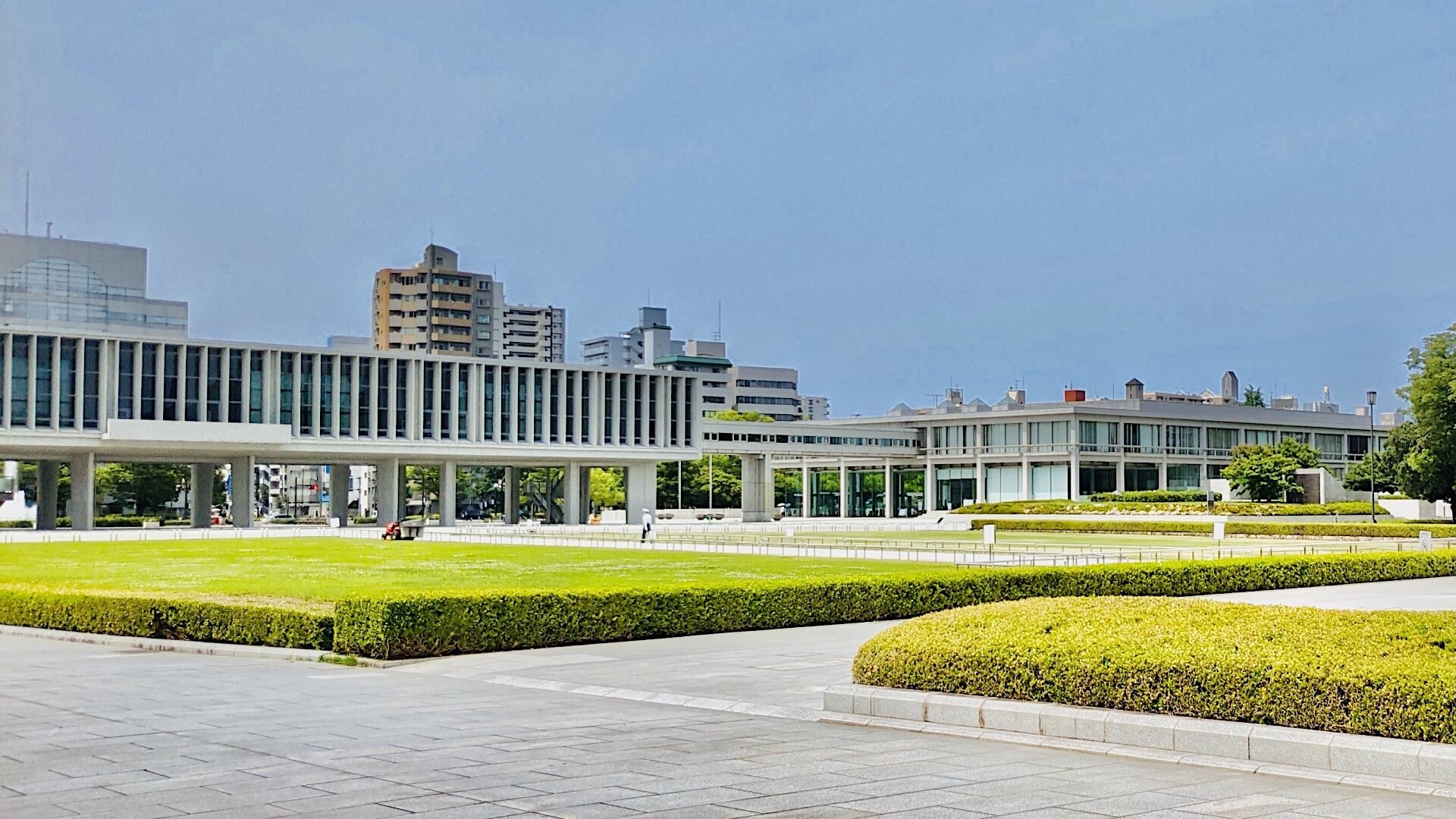
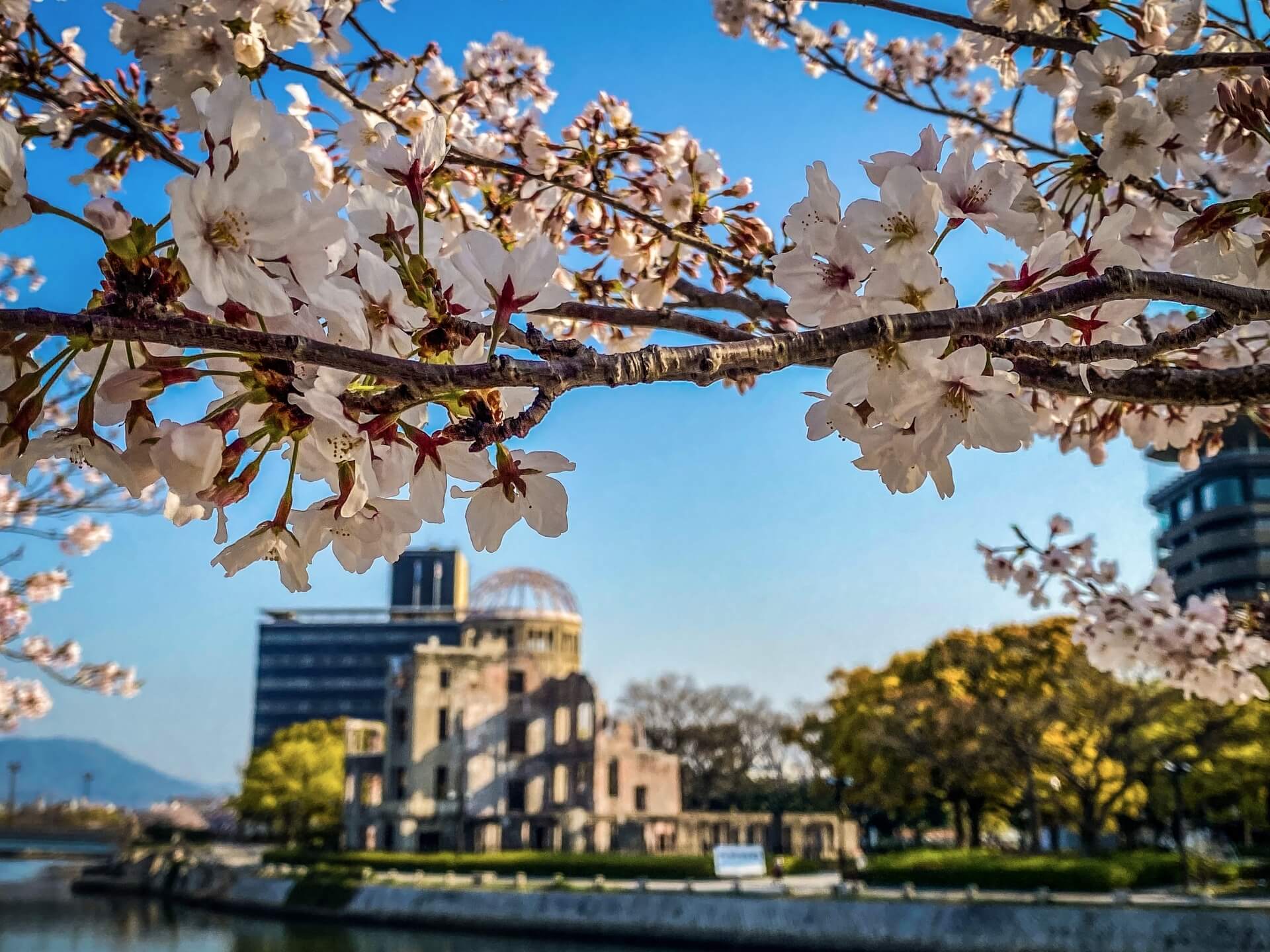
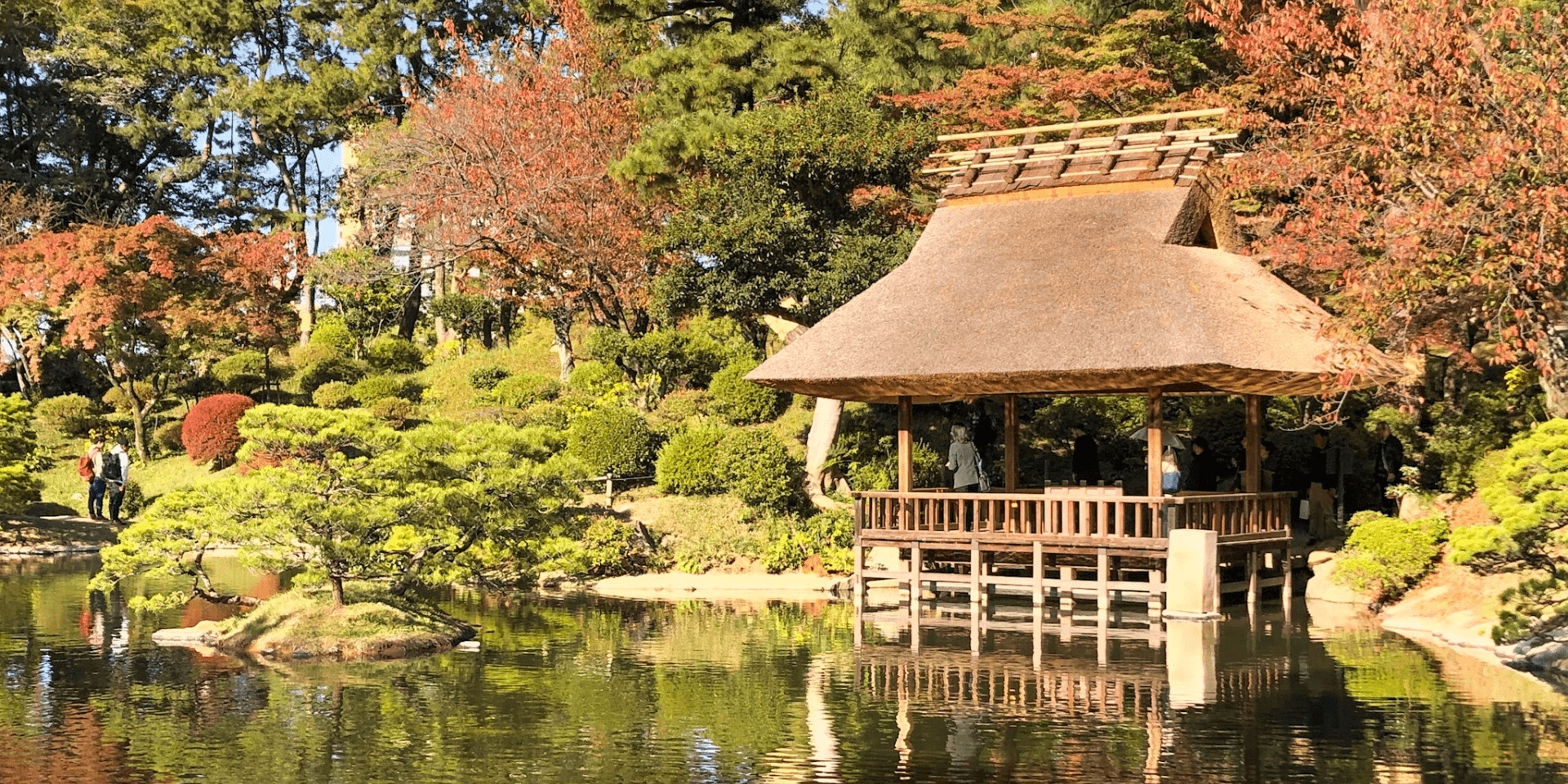
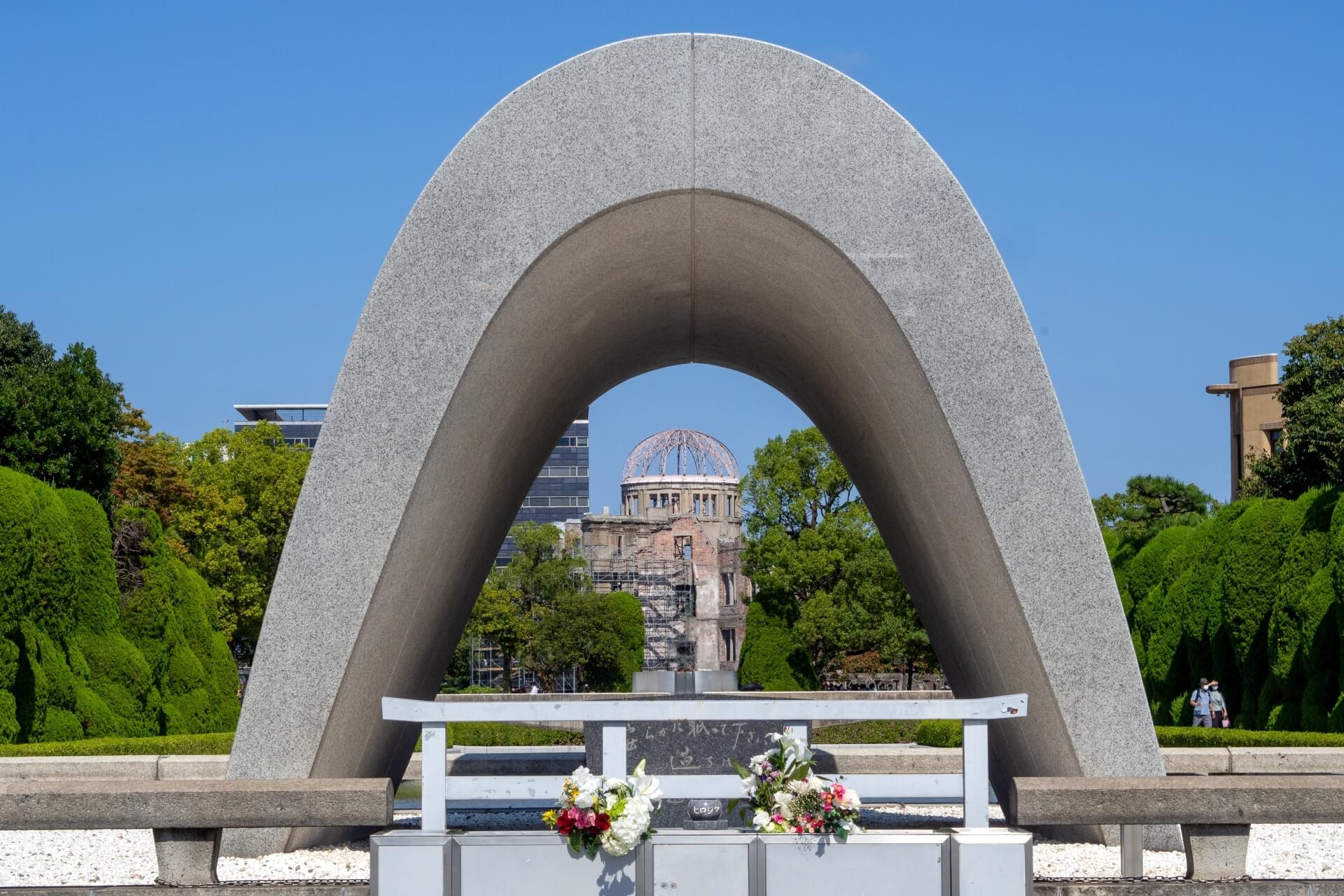
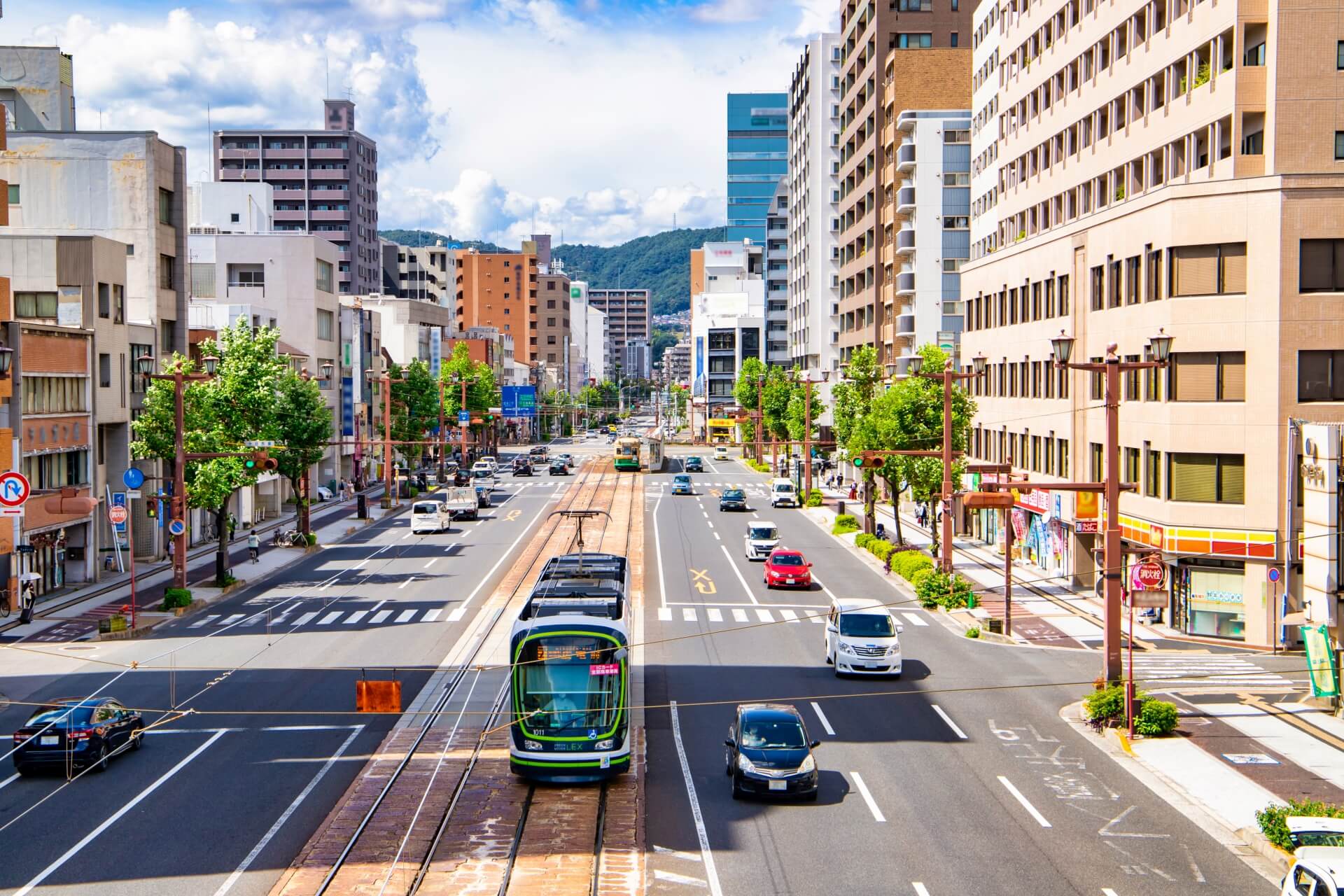
As reflected below, Hiroshima’s history is extensively and well-commemorated at sites throughout the city. For many if not most first-time visitors, these sites will be of primary interest and can occupy a full-day in Hiroshima. Once there, you will also discover that it is a thriving city, with enough to justify planning an overnight or multi-day visit. The island of Miyajima is within easy reach of the city centre with other islands and coastal areas of Hiroshima Bay also easy to access.
WHERE IS HIROSHIMA?
Hiroshima is the largest city in Hiroshima Prefecture and for many international visitors, the furthest point west they will travel during their time in Japan. It is located approximately 325km to the west of Osaka, a journey that takes as little as 80 minutes thanks to the San’yo Shinkansen / "Bullet Train" running from Shin-Osaka Station to Hiroshima Station. A pleasant and highly-liveable city, Hiroshima’s history is of course tragic but should not define it. The city and surrounding region are worth visiting for many reasons, especially for travellers heading further west onto Kyushu or back toward Osaka and central Japan.
30 THINGS TO DO IN & AROUND HIROSHIMA
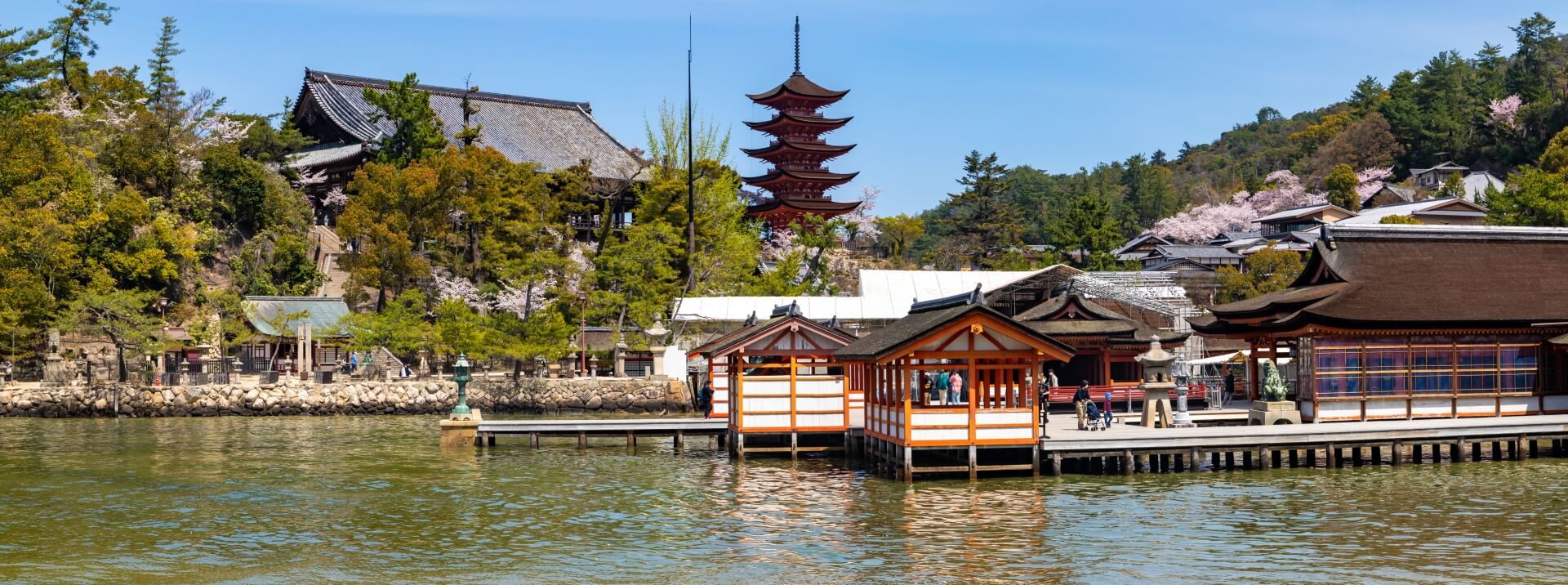
For obvious reasons, it’s possible to view Hiroshima solely through the prism of its tragic history. As the first and one of only two cities ever subjected to use of a nuclear weapon, Hiroshima occupies a hugely important place in modern history yet it’s also a thriving city of varied cultural destinations, good food and access point to Miyajima, the Setonaikai National Park and wider region of the Seto Inland Sea. But it goes without saying, that for most first-time visitors, learning of and honouring the city’s solemn history will be of most importance:
1 / HIROSHIMA PEACE MEMORIAL PARK / all year round
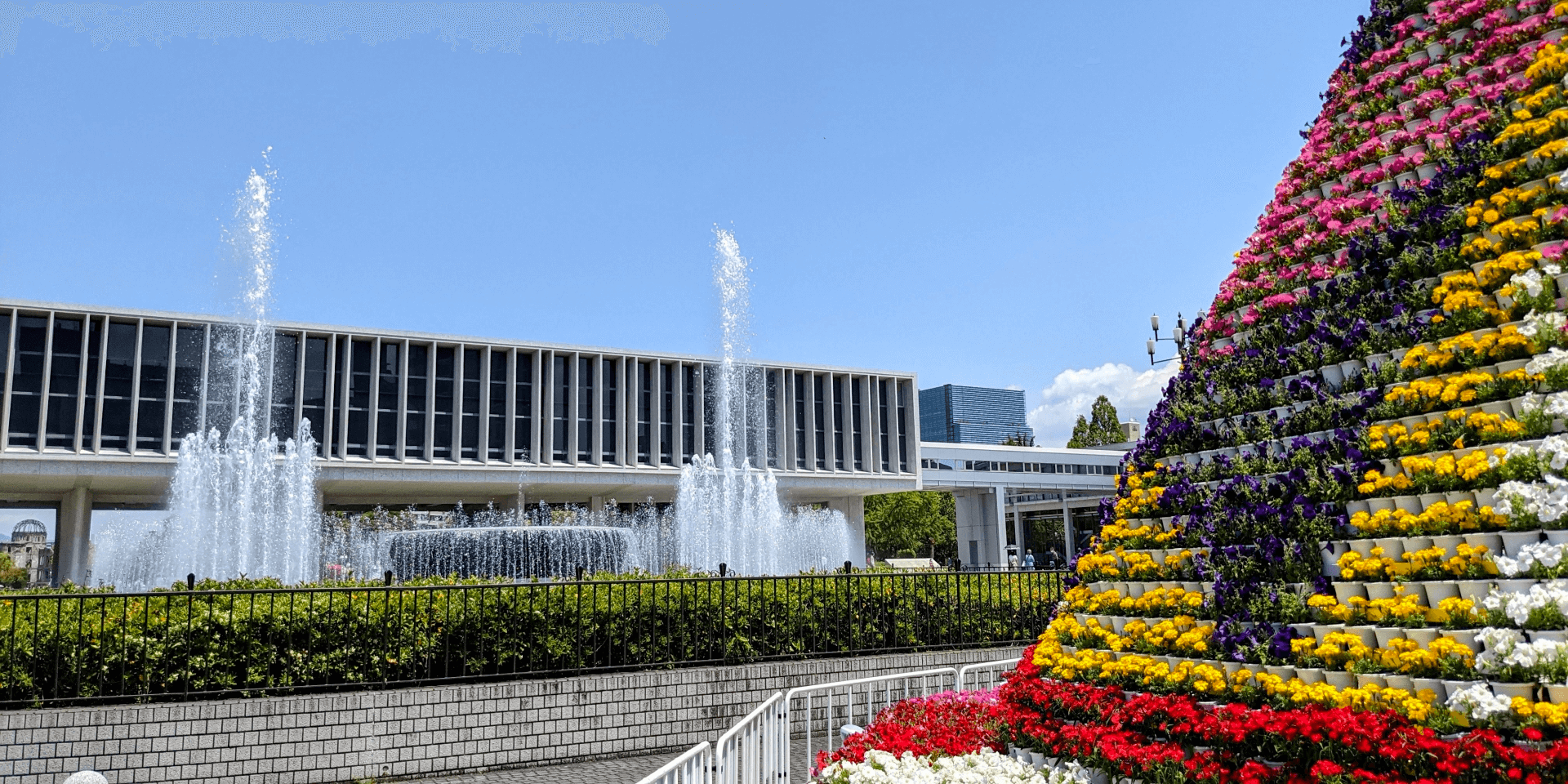
Located around 30-minute walk or 15 minutes by tram from Hiroshima Station, the Hiroshima Peace Memorial Park (平和記念公園 / “Heiwa Kinen Kōen”) covers 120,000 square meters in the center of the city. Accessible at all times of the day, the park includes multiple points of interest – the most significant of which are listed individually below – but in itself, is an expansive and tranquil location in which to wander and reflect on what took place. The park covers the area directly below where the bomb fell, the former commercial and political center of the city. Deliberately targeted for that reason, the park was created to permanently commemorate the victims of the bomb and in devotion to global peace rather than redevelop the area. The park is free to enter and can be accessed from multiple points.
2 / PEACE MEMORIAL MUSEUM / all year round
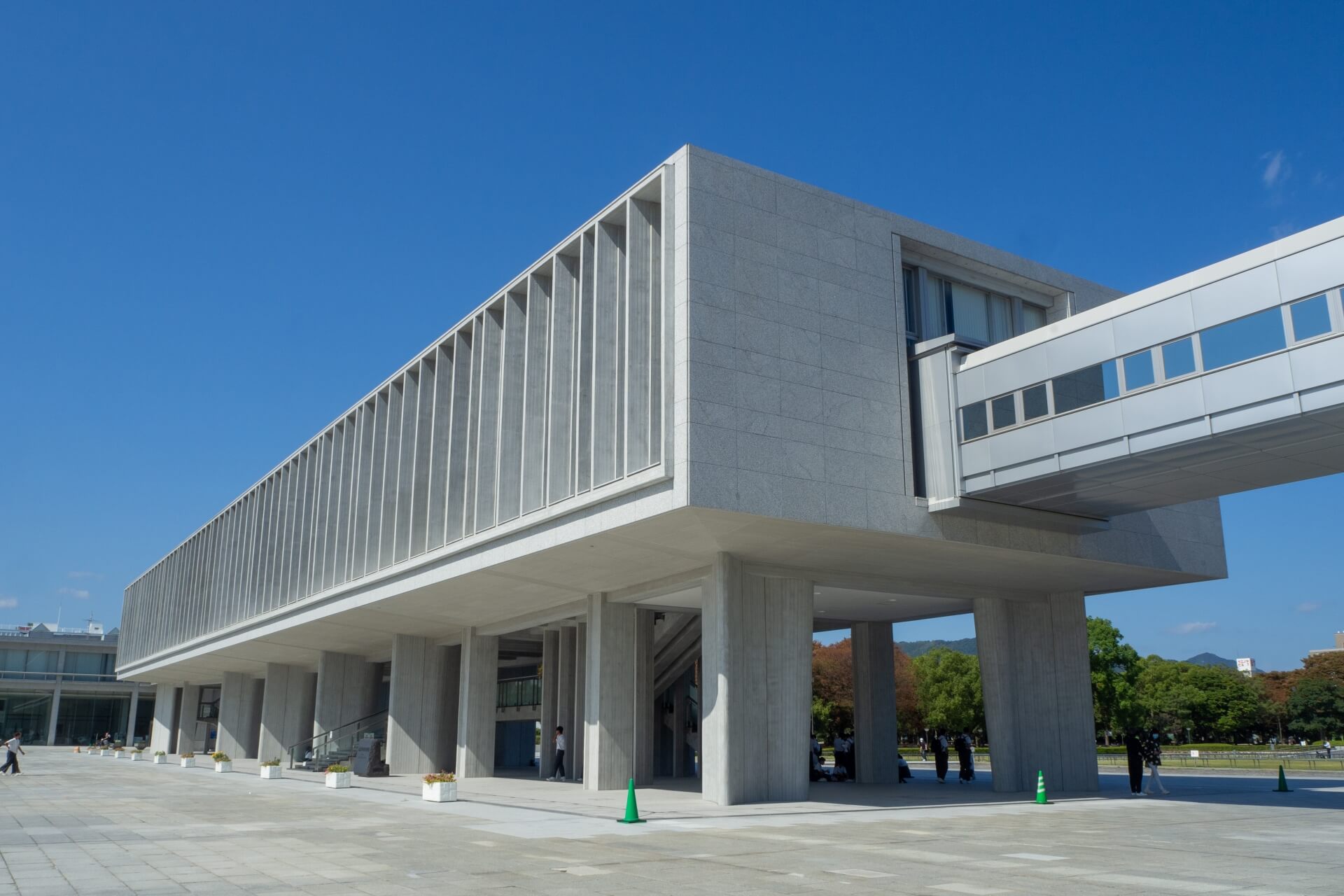
The Peace Memorial Museum is the park’s central facility. Housed in two buildings, the museum commemorates the events of August 6th 1945 and its aftermath. The museum is intended to honor those who lost their lives due to the bombing and serve as a beacon for global peace, and though harrowing, is very well-presented and suitable for visitors of all ages. Extensive information is available along with English, Chinese, Korean and other foreign language audio guides for JPY400. The museum is staffed by volunteer guides who are there to assist with your experience and may approach you to provide information – well-worth engaging with if you have the chance.
3 / HIROSHIMA VICTIMS MEMORIAL CENOTAPH / all year round
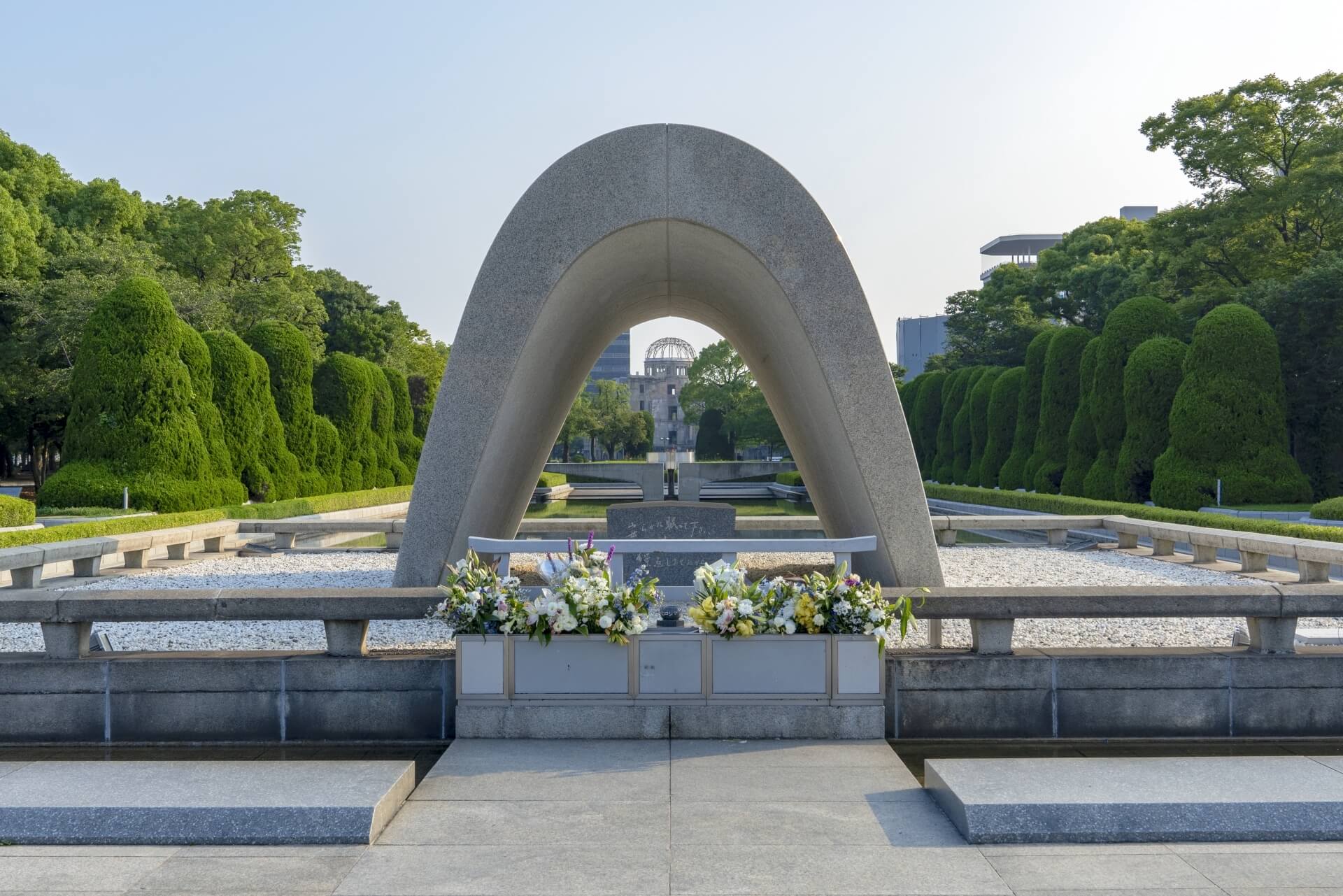
Just to the north of the museum but still within the park, the Cenotaph for the Victims of the Atomic Bomb commemorates the many victims of the bomb and its aftermath. Sitting within the Pond of Peace, the cenotaph looks toward “Flame of Peace.” Lit in August 1964, the flame is an enduring reminder of the continued threat of nuclear weapons and intended to burn “until the day when all such weapons shall have disappeared from the earth.” This area of the park hosts events each year on August 6th as people gather to commemorate the victims and reflect on the immense loss of that day and what followed in the years after. This area of the park is accessible at all times of day and is free to enter.
4 / CHILDREN’S PEACE MONUMENT / all year round
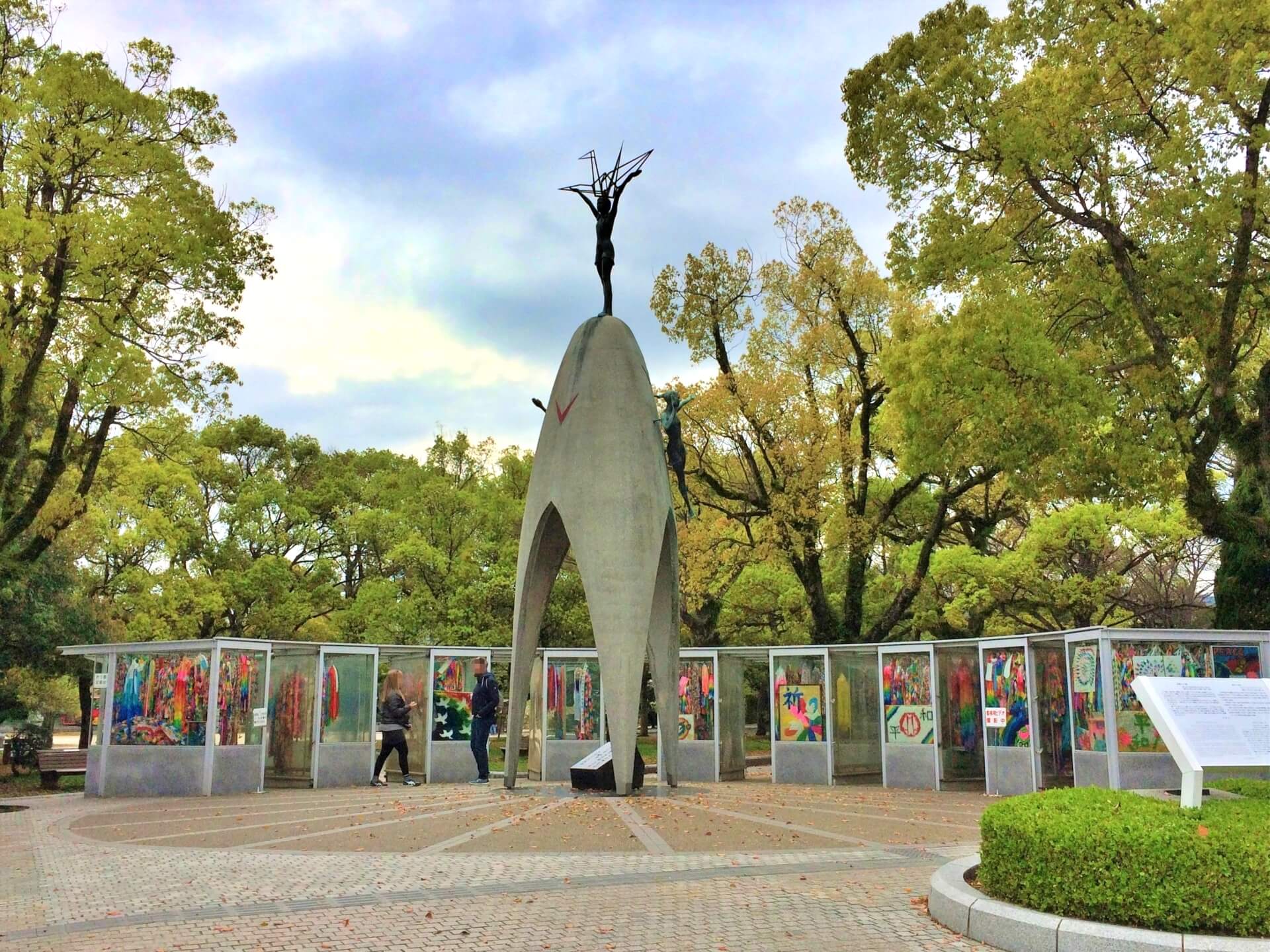
When the bomb fell at 8:15 in the morning on August 6th, many school children were out in the open going about their morning activities. An unknown but unbearably large number were victims of the bomb blast, with others condemned to become sick in the years to come. Sadako Sasaki was one such child. Having survived the bombing seemingly unharmed at the age of two, Sadako developed leukemia when aged eleven – an apparent result of radiation exposure. While in hospital, Sadako set about folding one thousand “orizuru” (paper cranes), in-keeping with a belief that should you do so, you will be granted a wish.
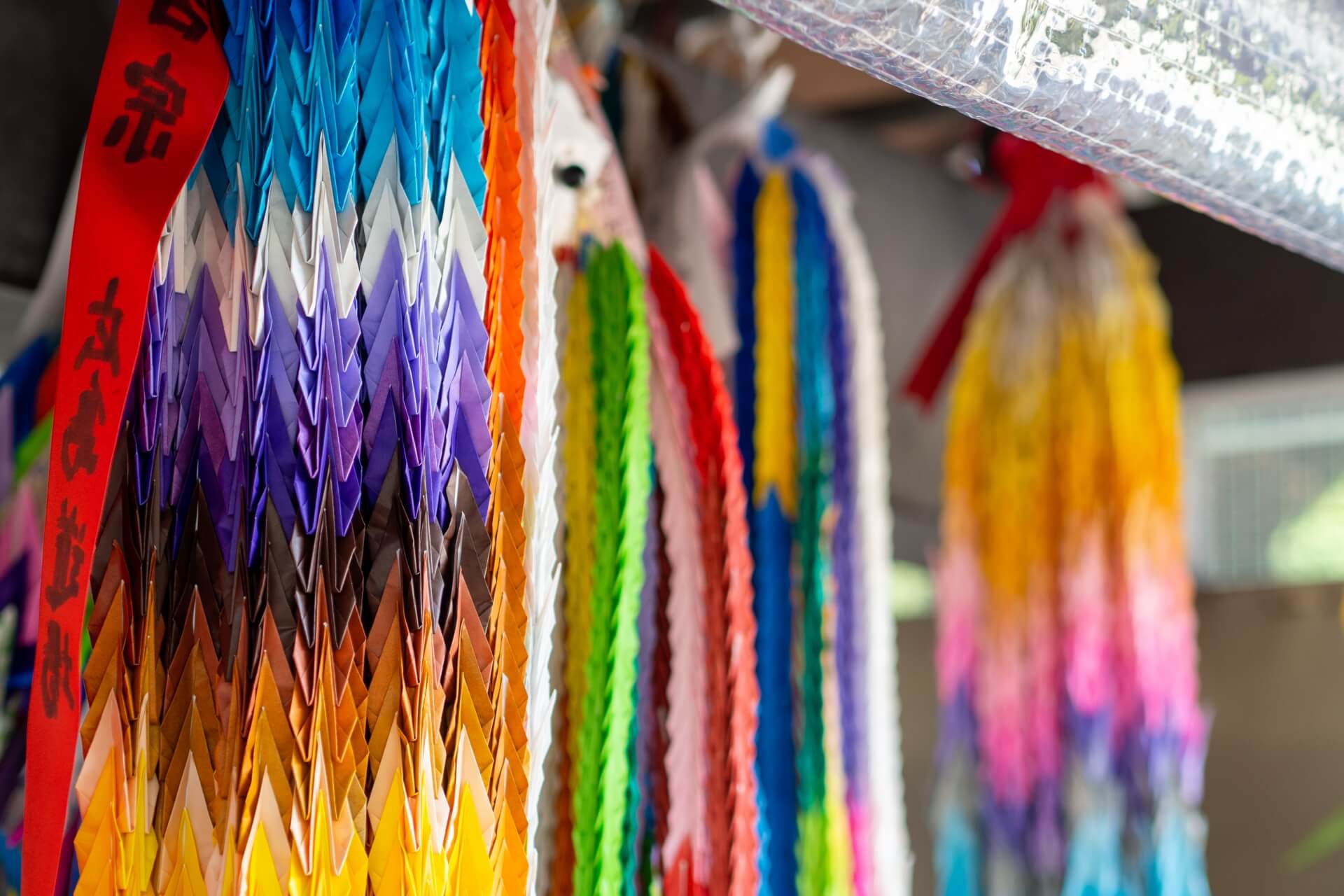
On October 25th, 1955, Sadako passed away at the age of twelve. Never to be forgotten, she came to represent the children lost to the bomb, all of whom are commemorated by the Children’s Peace Monument at the north end of the park. Although a simple monument, millions of paper cranes are left here each year to honor these children, making it one of the park’s most beautiful and poignant memorials. It is accessible at all times of day and is free of charge.
5 / ATOMIC BOMB DOME / all year round
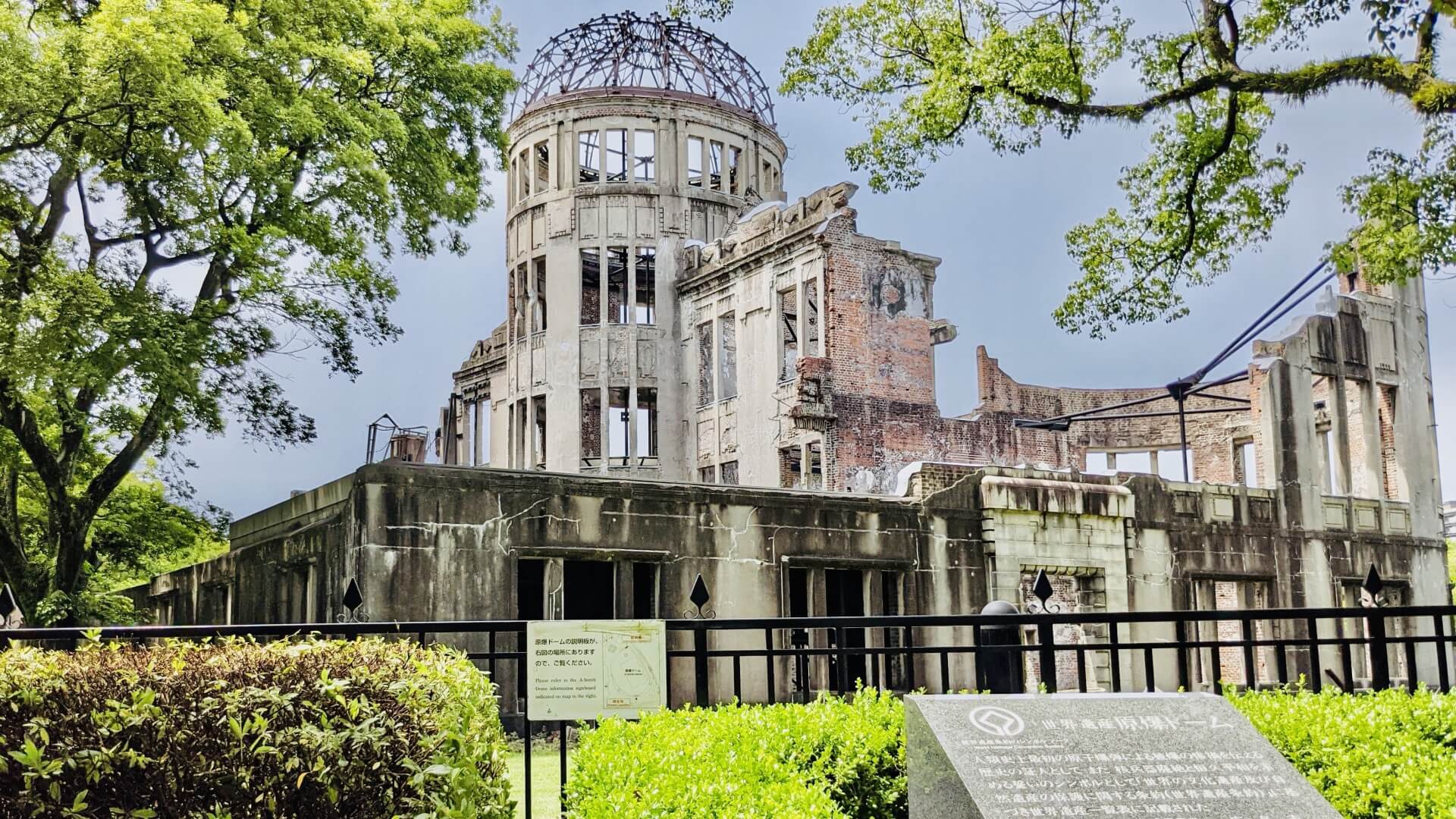
Also known as the “Hiroshima Peace Memorial,” the Atomic Bomb Dome sits across the Motoyasu River, separated from the main park. The skeletal shell of what was the domed “Prefectural Industrial Promotion Hall,” was one of the few buildings to survive within the primary blast zone. Afforded World Heritage status in 1996, the building stands in stark testament to Hiroshima’s tragic history and position in the global consciousness. The building cannot be entered but it is accessible for viewing from the outside at all times of day, free of charge.
If you're visiting Hiroshima and would like to visit all of the locations mentioned above and more, we recommend booking our Half-Day Hiroshima Highlights Tour. Conveniently offered at two different time slots, 9:00 or 14:30, this tour will allow you to visit the most significant tourist spots in the city of Hiroshima, while still leaving the rest of your day free for other activities.
6 / HIROSHIMA CASTLE / all year round
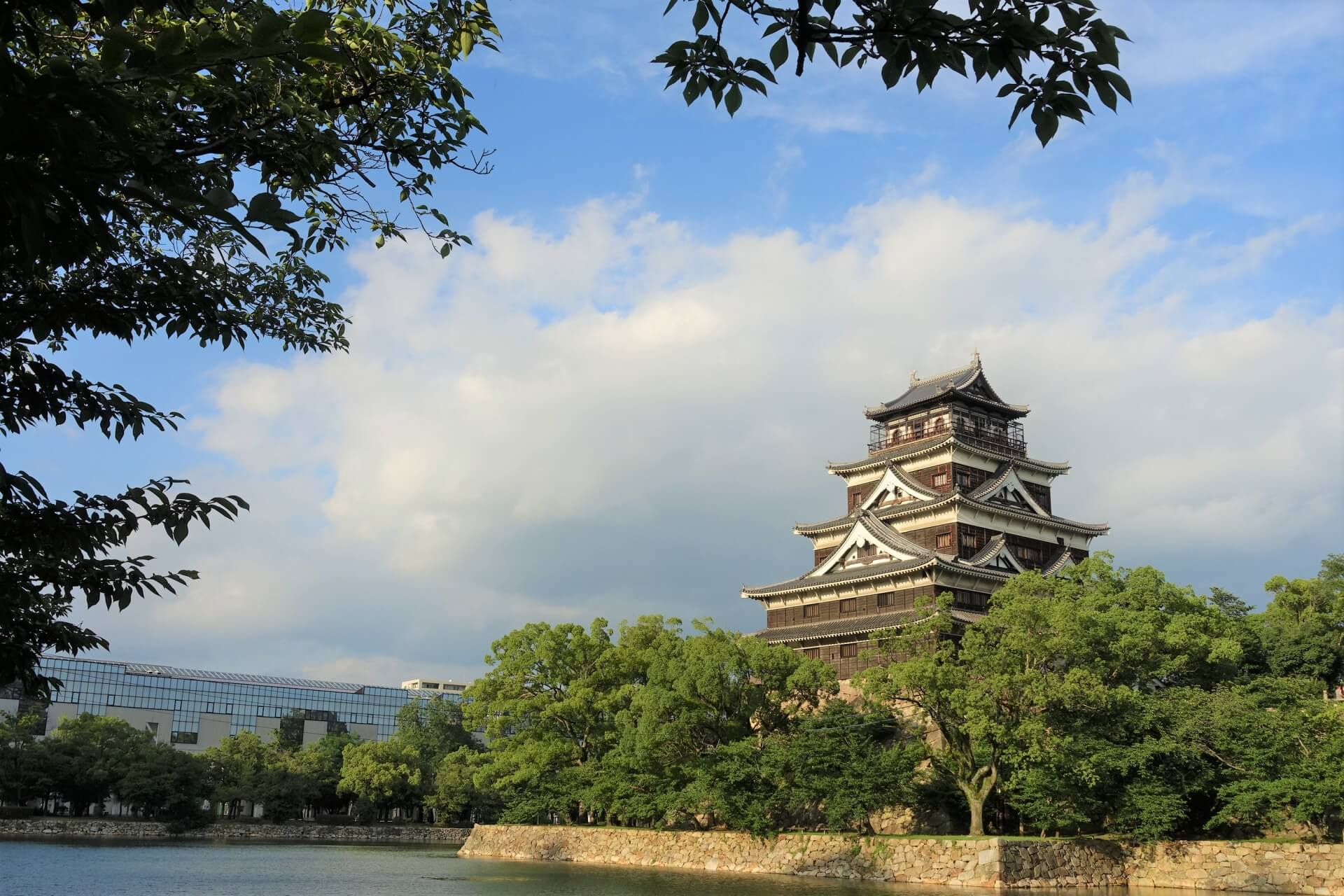
Around 15-minute walk from the Atomic Bomb Dome, Hiroshima Castle stands in beautiful testament to the history of the city prior to August 1945. First built in 1591, the castle was the political and economic heart of the city. Spared from the widespread destruction of most of Japan’s castles during the Meiji Restoration, the castle was tragically lost on August 6th,1945. Thirteen years after its destruction, a reconstruction of the original castle opened in 1958. It stands five-stories / 27 meters in height, set on a stone foundation which in itself stands around 12 meters tall. In more recent years, reconstructions of other buildings and former defensive structures have also added to the overall historic character of the castle precinct. From the top floor of the castle, visitors can enjoy panoramic views of the city.
7 / SHUKKEI-EN GARDEN / all year round
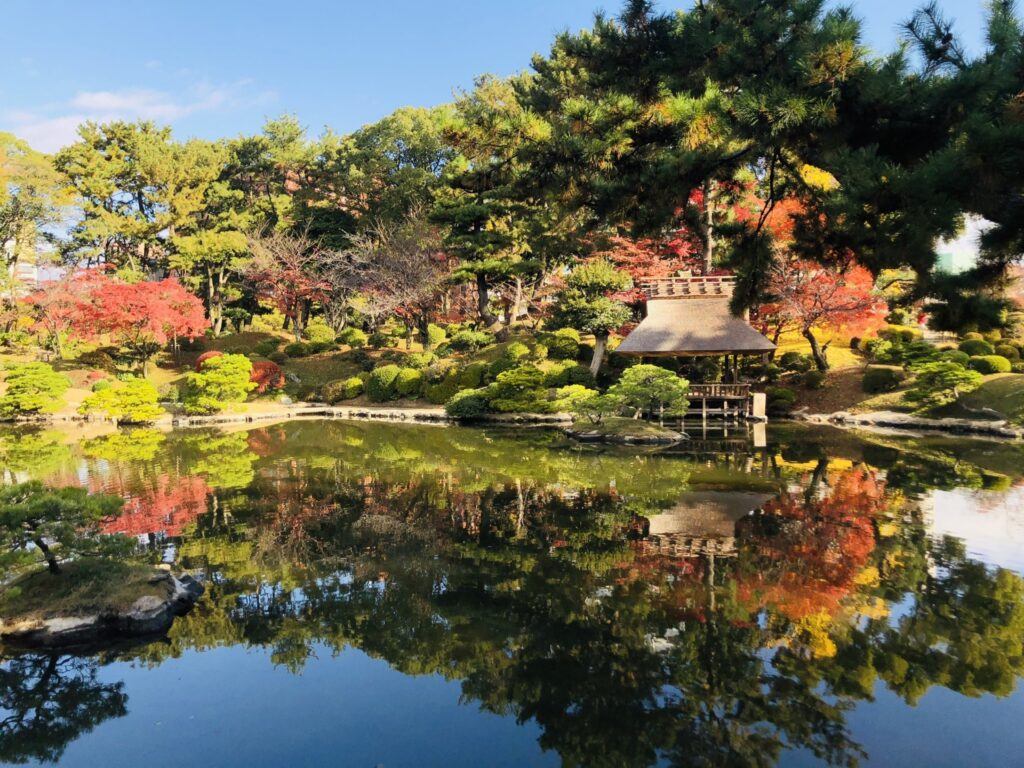
Shukkei-en Garden is a traditional Japanese garden located between the castle and Hiroshima Station – around an 10-minute walk from either starting point. Established in 1620, the garden follows the classic principles of Japanese garden design in mimicking features of the natural world in miniature mountains, waterfalls, forests and valleys. Pathways connect each area of the garden with the central pond featuring a couple of teahouses at which to enjoy the atmosphere and tranquil views on offer, with a green tea and traditional snack at hand. Similar to most other gardens in Japan, the scenery can change drastically each season, providing a new and unique experience when visiting at different times throughout the year.
8 / MITAKI-DERA TEMPLE / all year round
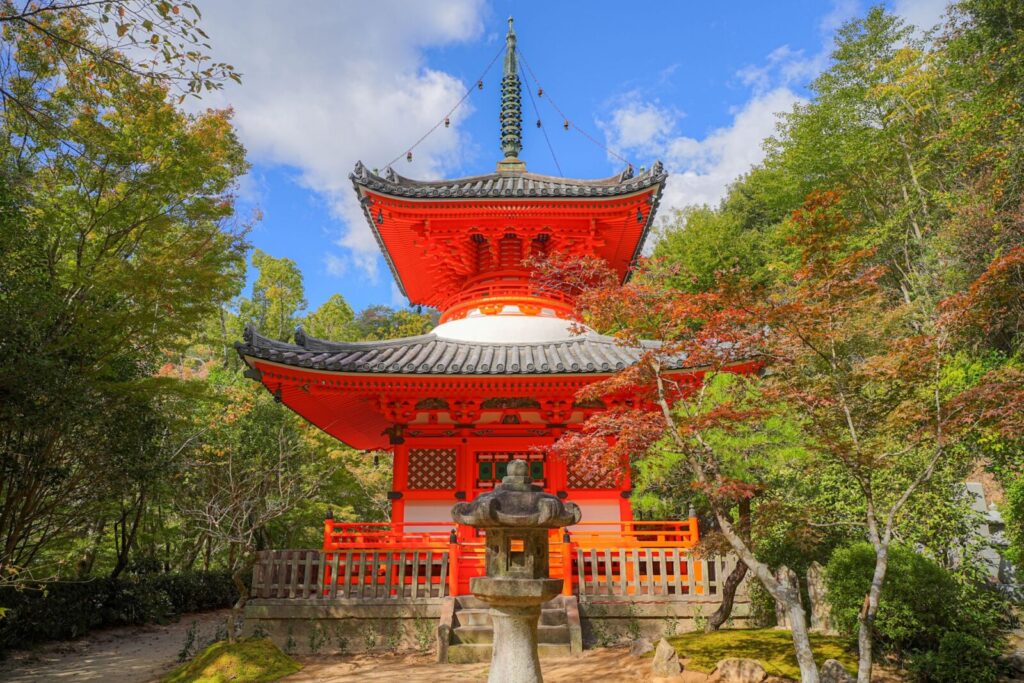
Undoubtedly one of Hiroshima’s hidden gems, Mitaki-dera is a Shingon Buddhist temple which was originally founded in 809 and currently sits at the bottom of Mount Mitaki. This temple is dedicated to Kannon, a Bodhisattva usually associated with mercy and compassion. The name of the temple and the mountain it is located on come from the three waterfalls located within the temple grounds, with “mi” (三) meaning “three,” and “taki” (瀧) meaning “waterfall.” Mitaki-dera is mostly known only by locals and thus is usually not busy. Tourists who visit the area might run into only two or three other people while they are there, making this a nice break from the hustle and bustle of other temples in Japan.
Mitaki-dera is covered in multiple different structures and surrounded by nature on all sides, making it a perfect location to immerse oneself in the beauty and culture of Japan. One such structure is a stunning Two Storied Pagoda located by the entrance of the temple. Originally built in 1526 in Wakayama Prefecture, it was moved to Hiroshima in 1951 to console the victims of the atomic bombing. Mitaki-dera can be explored by taking a leisurely stroll around the temple grounds and ascending some stairs to reach an observation deck with a fantastic view of Hiroshima. Guests who enjoy a bit more of a challenge can try the steep 1,100-meter hike to the summit of the mountain, which will reward them with an even greater view of the city.
For guests interested in visiting Mitaki-dera while also making sure to stop by all of Hiroshima's most popular locations, we offer a 1-Day Tour which does just that! Your guide will take you to the Mitaki-dera temple as well as Peace Memorial Park, Peace Memorial Museum, Hiroshima Castle, and Shukkei-en Garden. The perfect tour for those looking to gain a broader perspective of the city of Hiroshima.
9 / FUTABANOSATO WALKING TRAIL / all year round
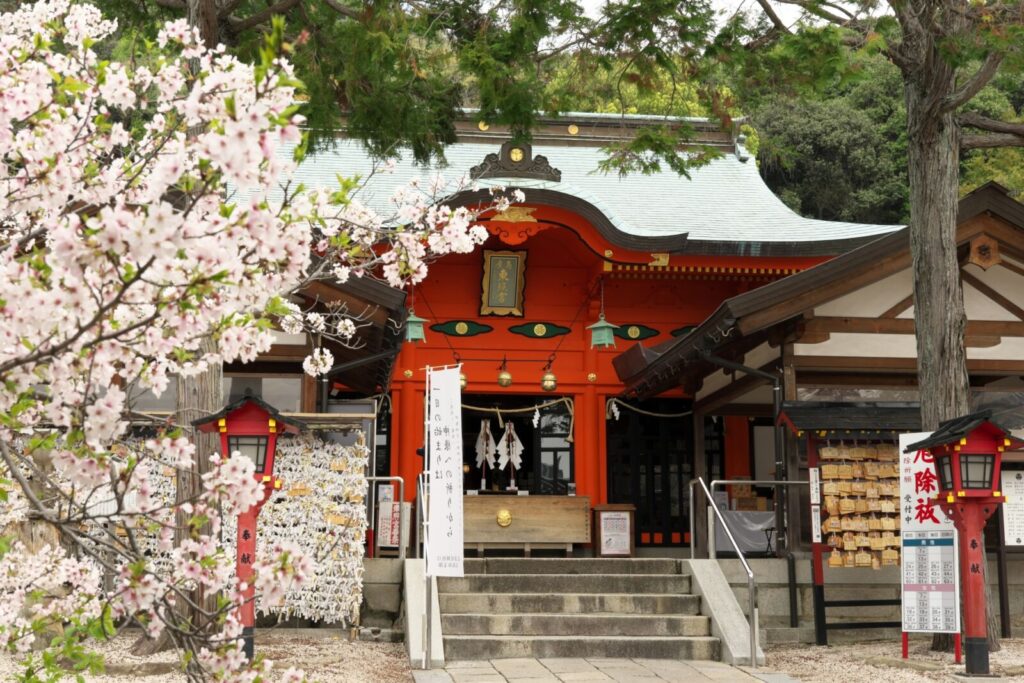
In the Northeastern part of the city of Hiroshima one can find multiple temples and shrines dating back to more than 400 years ago. These structures were built over many years by the different lords of Hiroshima castle and help tell the story of the former castle town. Tragically, some of the temples and shrines in the area were destroyed during the atomic bombing but have since been rebuilt to help convey the history of Hiroshima. In order to visit these temples, one can follow the “Futabanosato Walking Trail,” which stops at 16 different locations and extends for 10 kilometers. It can take about half a day to complete the entire trail at a leisurely pace, but it is definitely a worthy experience for those wishing to learn more about Hiroshima’s past and the different people who shaped the city.
10 / EAT BIG IN 'OKONOMIMURA' / all year round
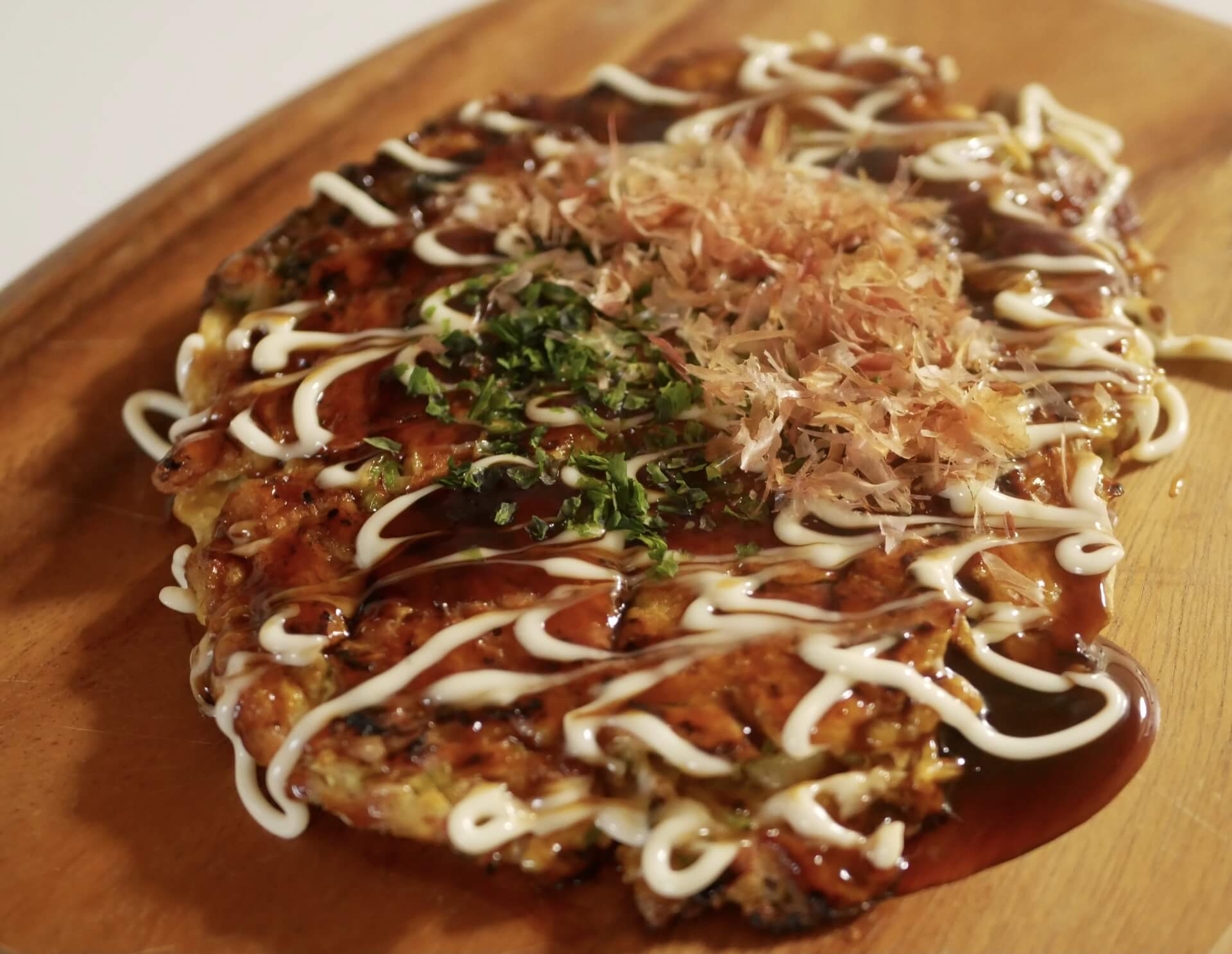
One of the great pleasures of travel is being led by your taste buds and in Hiroshima that means heading to Okonomimura. Named after the city’s “okonomiyaki,” Okonomimura or “Okonomi Village” has lots of restaurants serving the local take on one of Japan’s tastiest dishes. Sometimes referred to as a “Japanese pancake,” okonomiyaki combines cabbage, batter and a huge variety of other ingredients that are then cooked on a hot plate before being lavishly covered in sauce. Slightly thinner than the famous okonomiyaki of Osaka, eating Hiroshima-style comes with the usual range of ingredients including pork, seafood, cheese and many other tasty additions. Okonomimura is located around 10 minutes by tram from Hiroshima Station – you can use lines 1, 2, or 6 – and it is also accessible using the Hiroshima Sightseeing Loop Bus.
11 / VISIT MIYAJIMA & ITSUKUSHIMA SHRINE / all year round
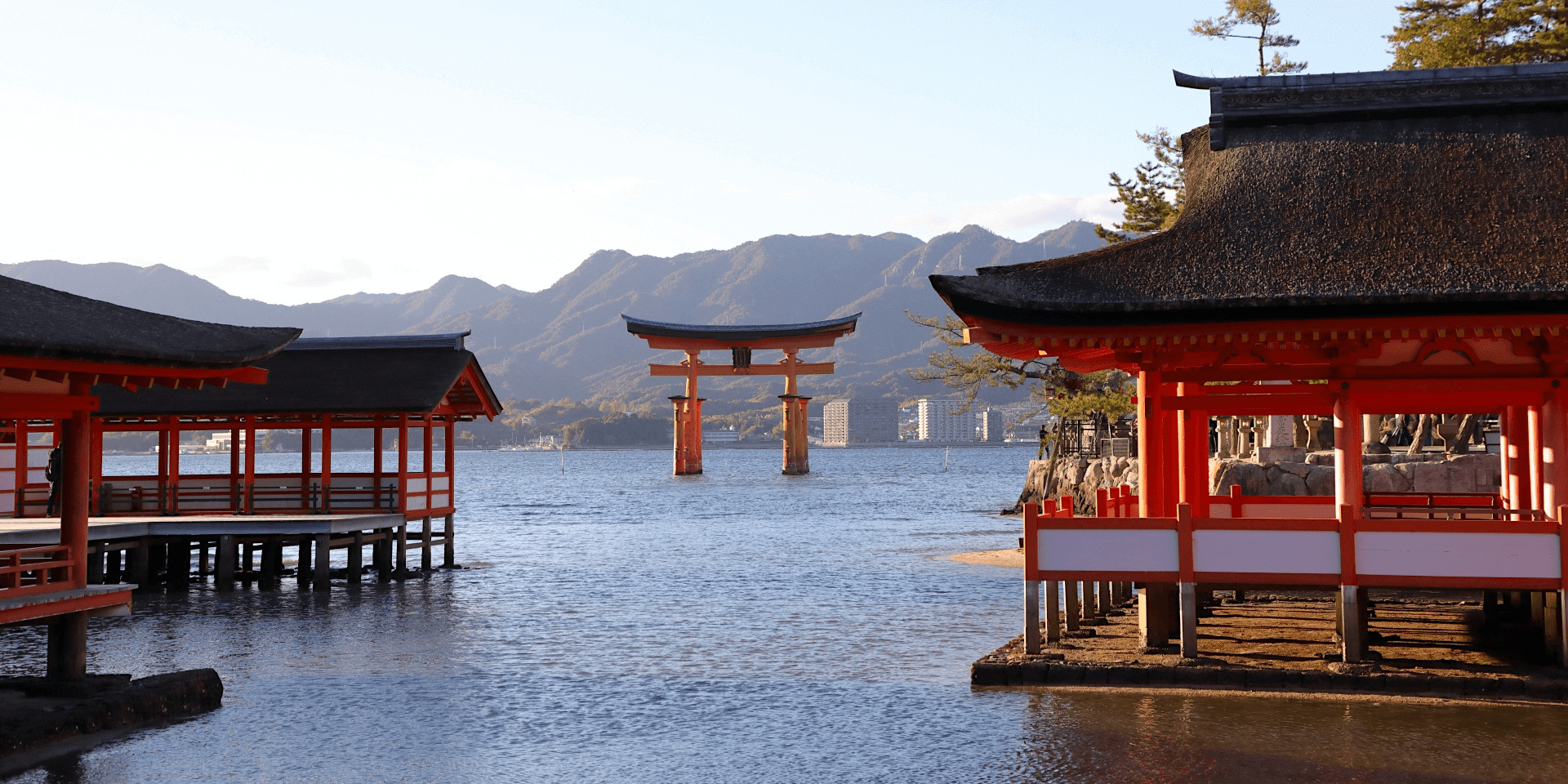
Miyajima is a small island within easy reach of central Hiroshima – around 60 minutes by a combined tram or train and short ferry ride. The island is most famous for the seaside Itsukushima Shrine and its famous sea-bound ‘torii’ gate. Indeed, the island’s actual name is Itsukushima although it is most commonly referred to as Miyajima or ‘Shrine Island’. Both the shrine and gate are built upon the seabed and water-bound at high-tide while you can walk out to the gate at low-tide.
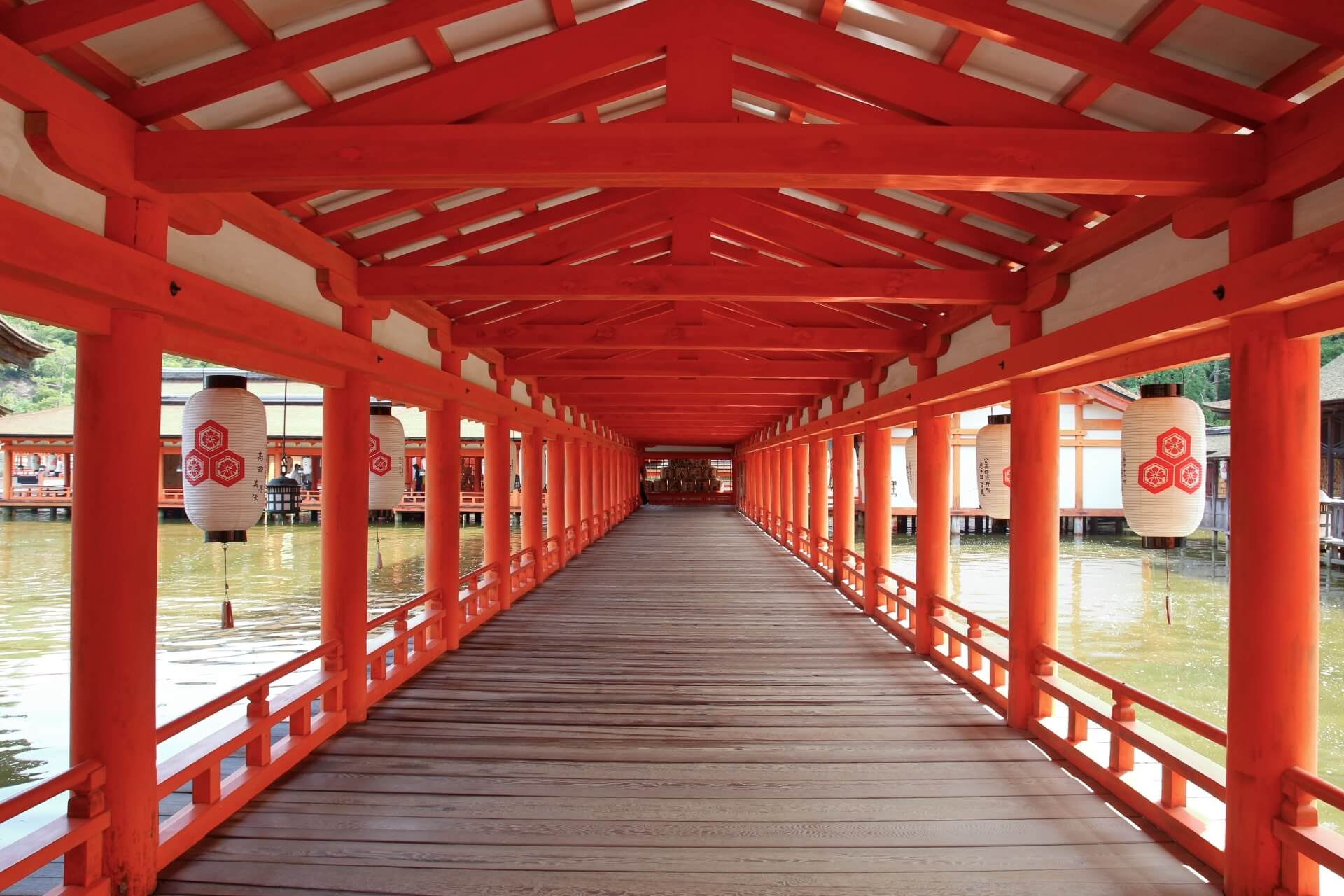
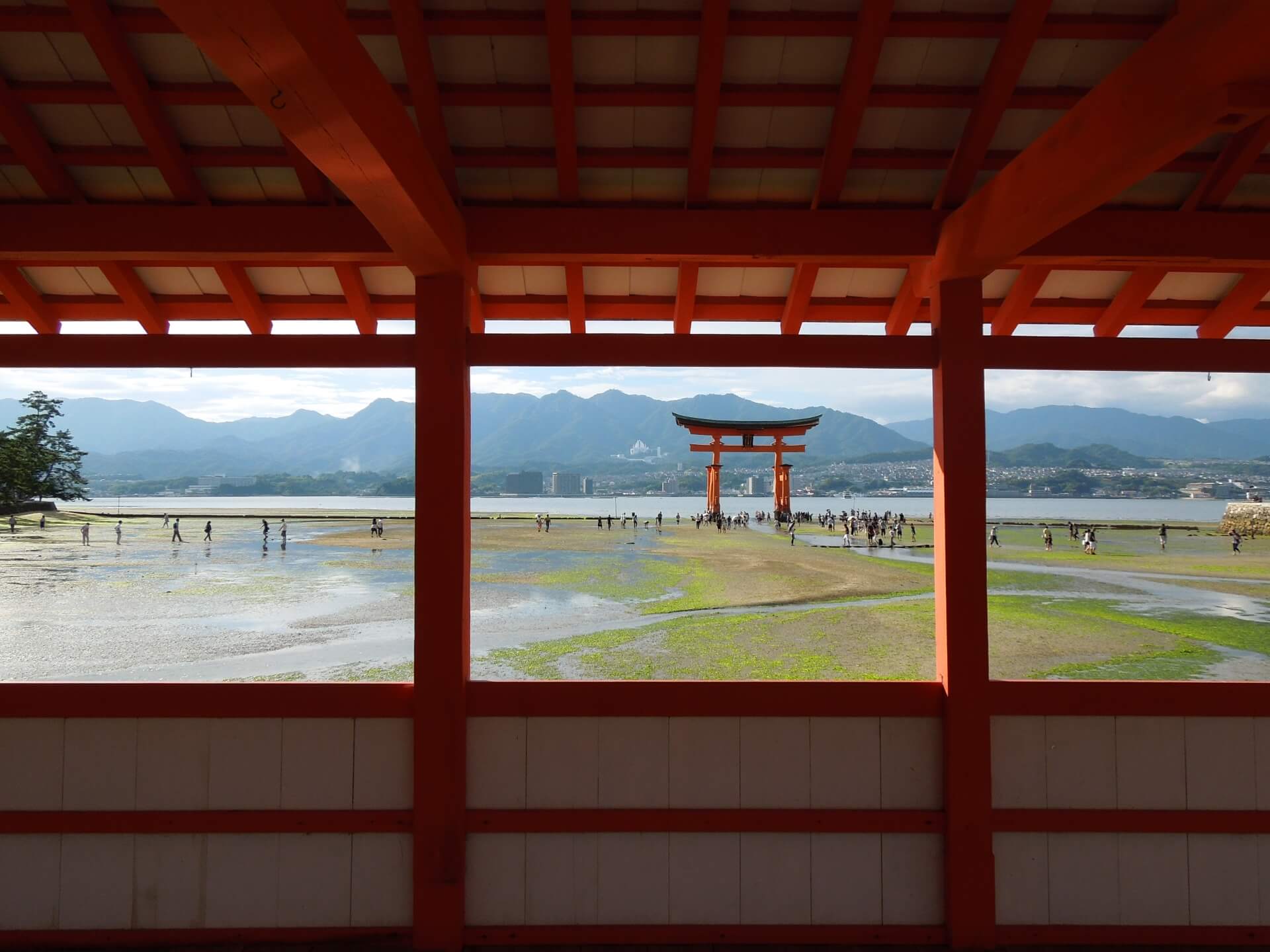
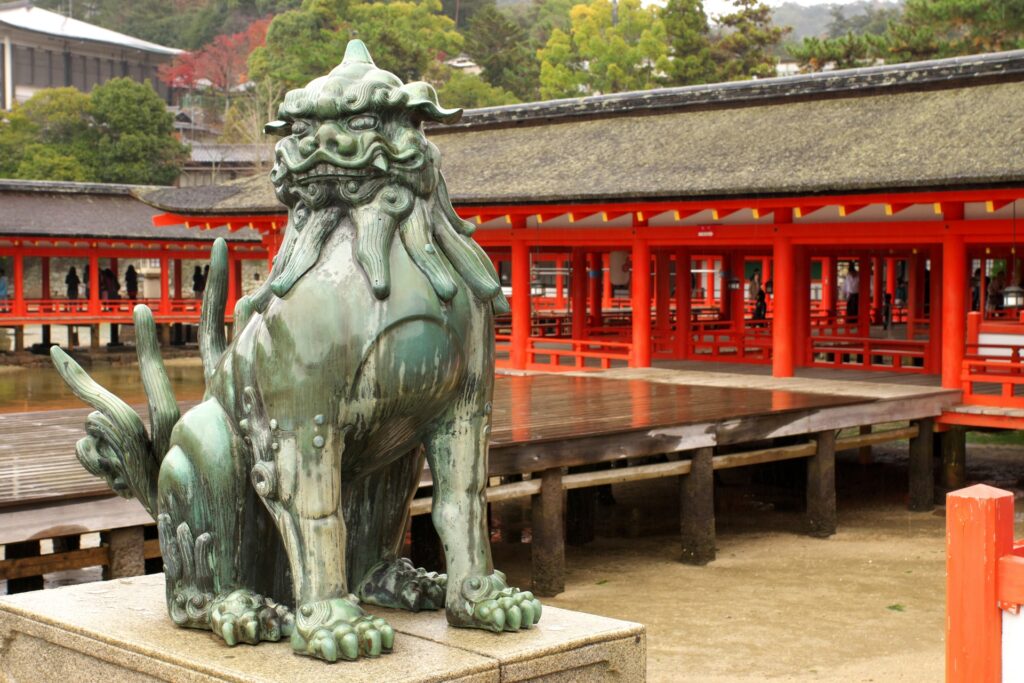
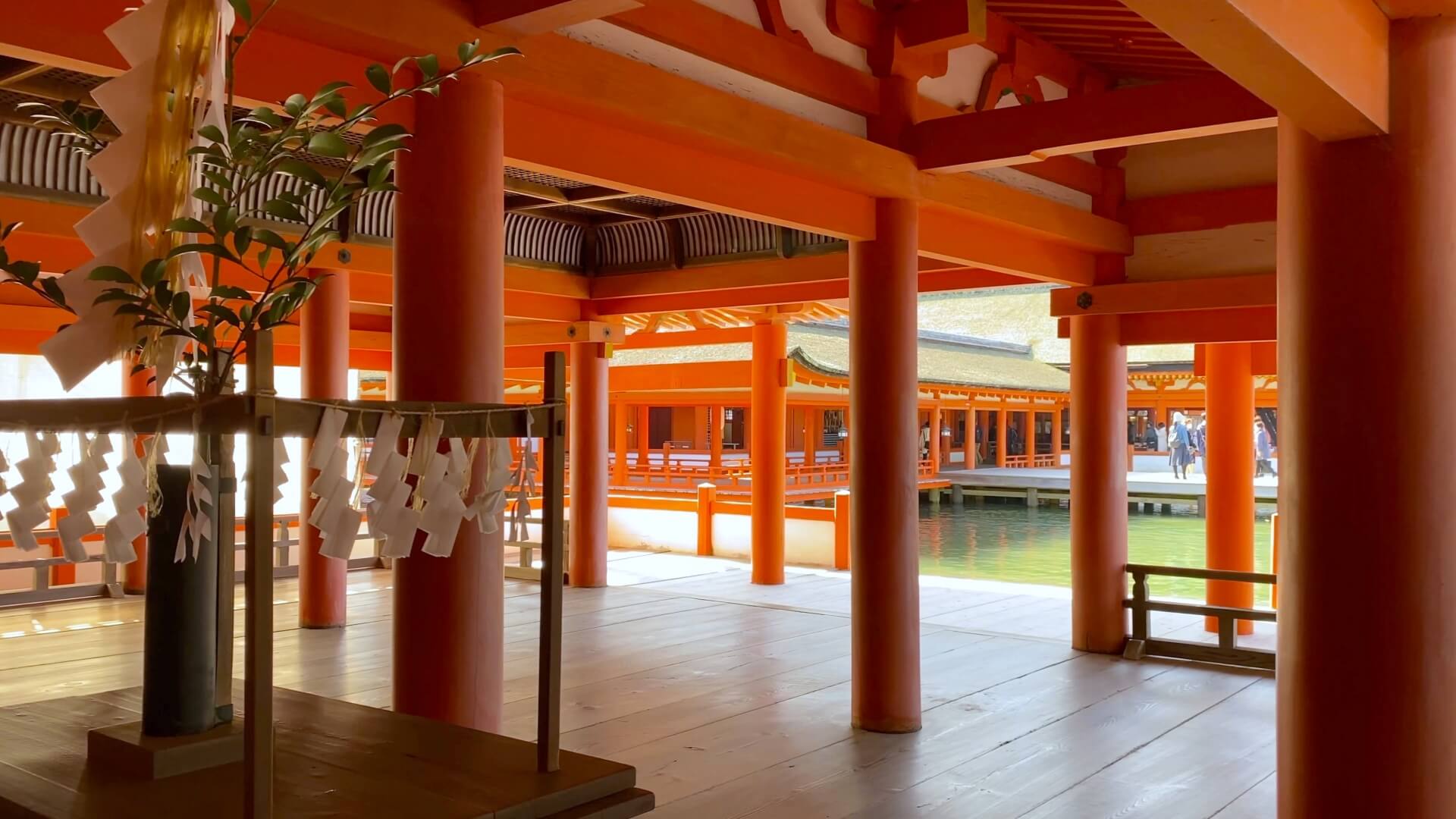
A beautiful sight throughout the day, the shrine and gate are illuminated until 23:00 allowing visitors to wander until late in the evening and capture some beautiful photos of one of Japan’s most famous cultural spots.
With so many stunning places to visit in Japan, it is often difficult to fit all the places you want to go to into your travel itinerary. With that in mind, we have created a tour which combines all of Hiroshima's must-see locations into a convenient 1-Day schedule. By booking this tour, guests won't have to sacrifice going to any of Hiroshima's top tourist attractions, and will be able to get the most out of their visit.
Your guide will be taking you to places such as the Peace Memorial Museum, Atomic Bomb Dome, and Hiroshima Castle within the city, as well as the iconic Itsukushima Shrine in Miyajima. These are only some of the many spots you will be able to visit, so make sure to click on "View Details" above to find out more information about this tour!
12 / STAY ON MIYAJIMA / all year round
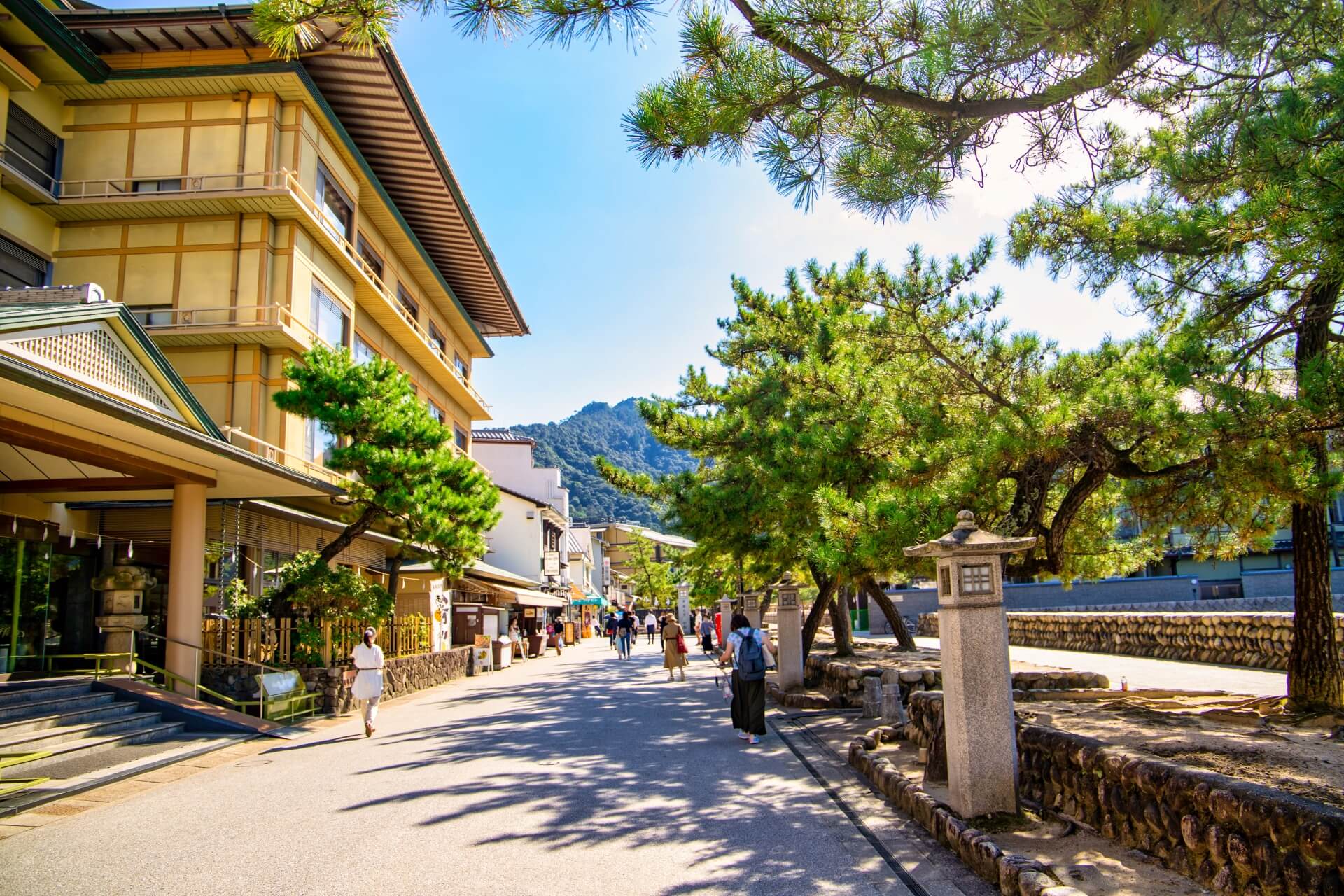
For anyone headed to Miyajima to visit Itsukushima Shrine, it’s worth considering staying on the island overnight. As mentioned above, the shrine and gate are illuminated every evening until 23:00, imbuing the small island with a lovey atmosphere at night. Crowded during the day, staying overnight is also a great way to get the most out of your time on Miyajima after the large tour groups leave in the afternoon and return the following day. There’s a good range of accommodation to choose from ranging from mid-size to large hotels along with plenty of ‘ryokan’ (traditional guesthouses), many of which are family run. Miyajima has a pleasant almost sub-tropical climate and character, making it a great place to wander, try the seafood and enjoy an ice cold drink in the hot and humid summer months.
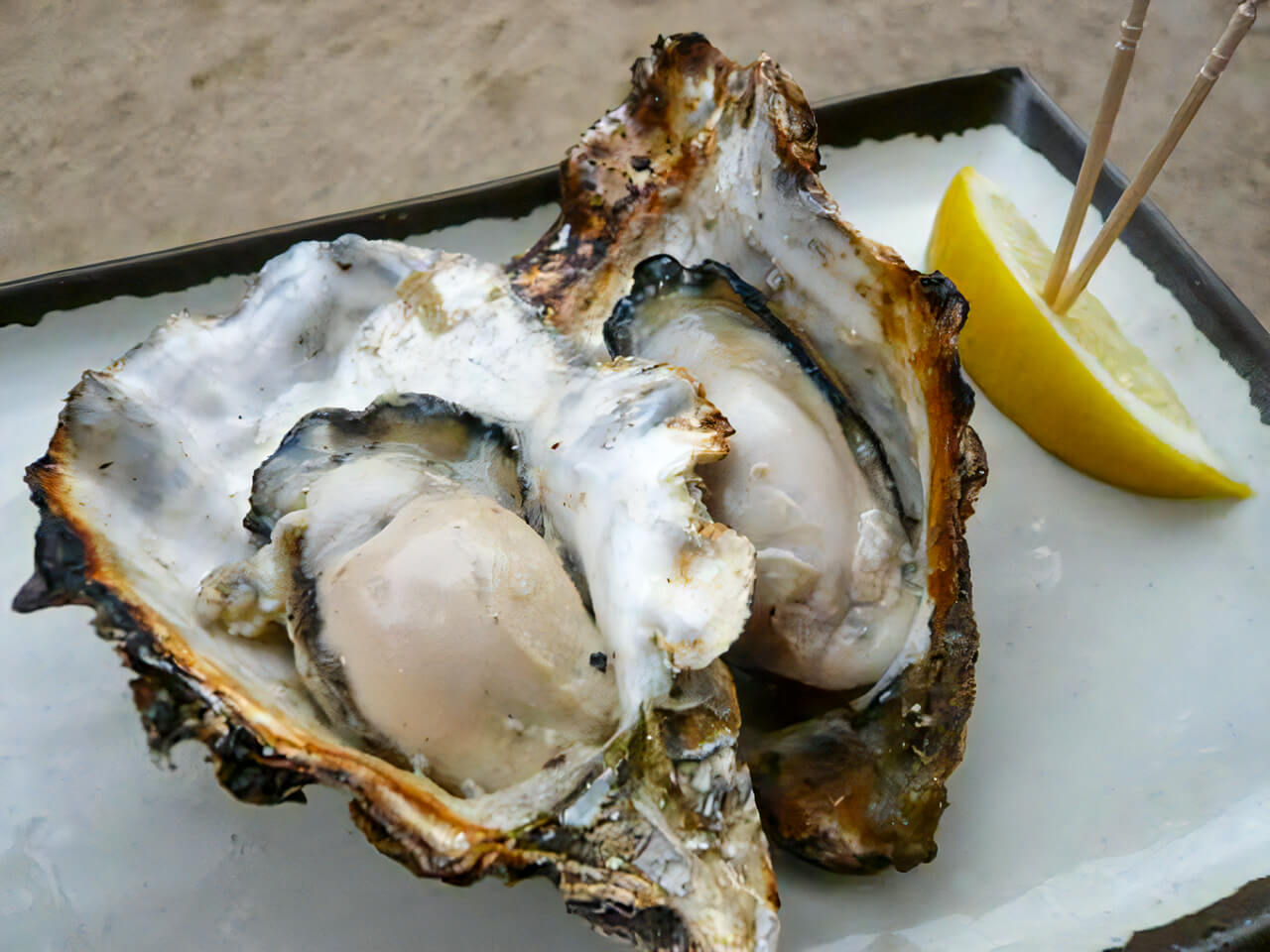
Just keep in-mind that while there are plenty of eateries open during the day, most close relatively early with few staying open until late into the evening. So make sure to check ahead and plan where you’ll eat-out or include dinner in your accommodation package. For more information including accommodation listings, see 'Best Areas to Stay When Visiting Hiroshima' below.
13 / DAISHO-IN / all year round
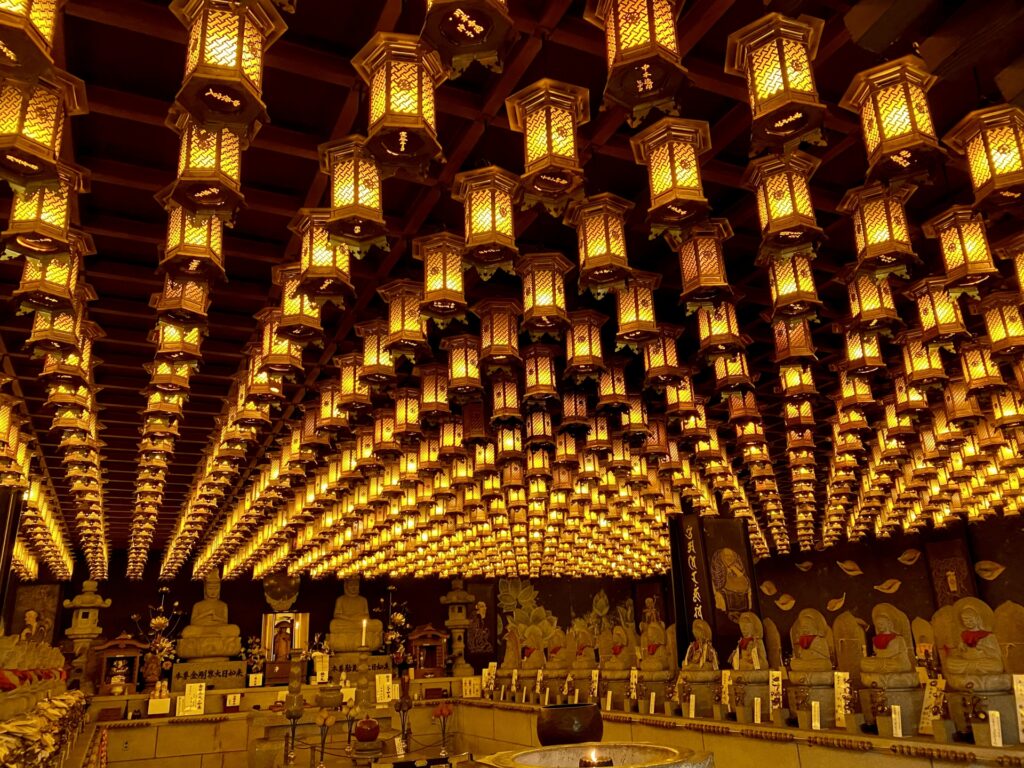
Located at the base of Mount Misen on Miyajima, Daisho-in is an important and picturesque Buddhist temple complex established in the 12th century. It is comprised of multiple buildings including the “Kannon-do” and “Maniden” halls along with other structures and statues. One of its most unique spots is the “Daishi Hall,” within which one can find a stunning and breathtaking room lit by golden lanterns and full of 88 statues, each representing a temple from the Shikoku "88 Temple Pilgrimage." Daisho-in is only a 5-minute walk from Itsukushima Shrine and is open all year round from 08:00 until 17:00. Admission is free.
Additionally, the “Daisho-in Course’” hiking trail leads from the temple to the summit of Mount Misen, the highest point on the island – see below for details.
14 / HIKE TO THE TOP OF MT. MISEN / all year round
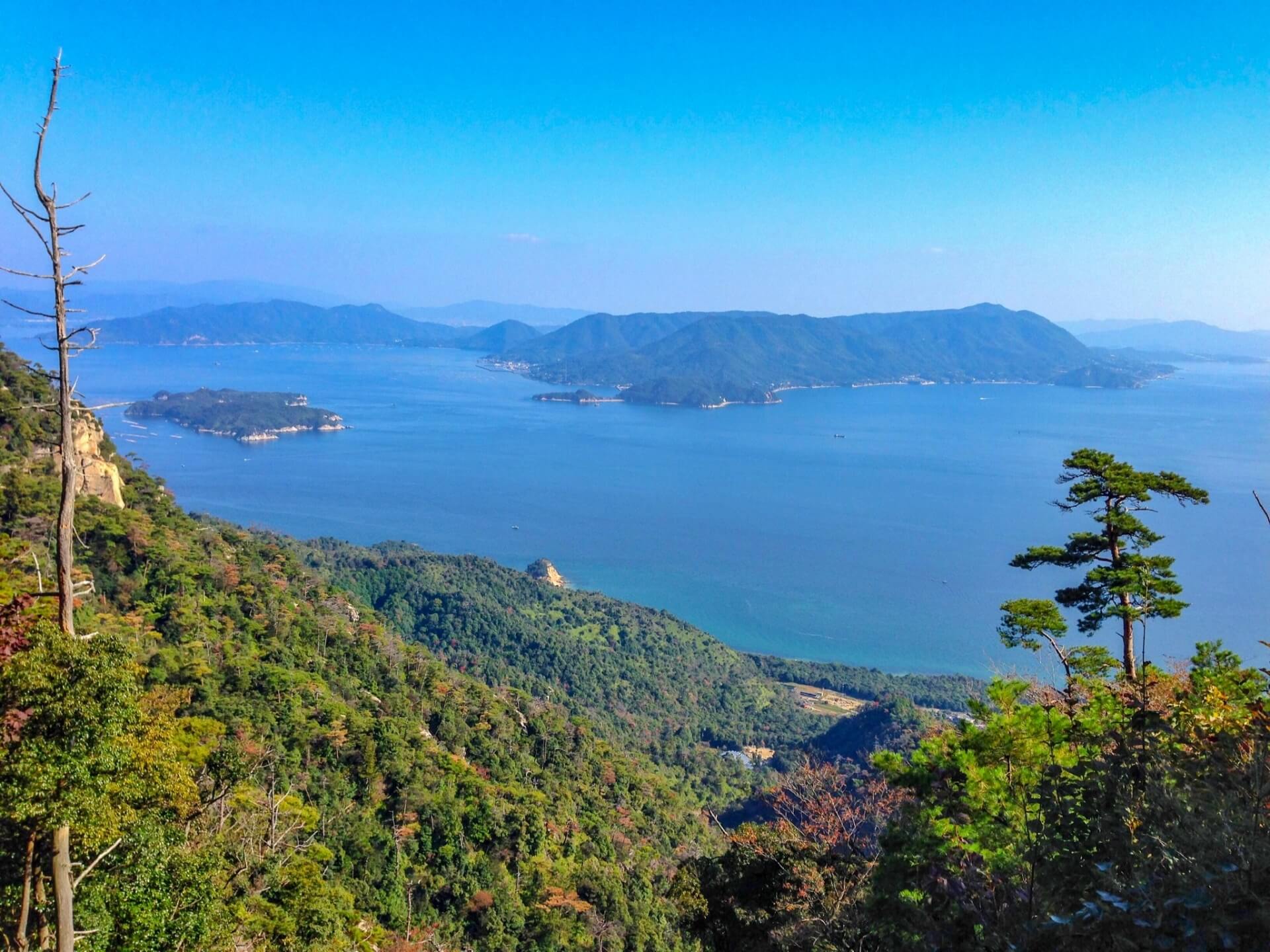
Miyajima is a small island that can be easily explored on-foot thanks to multiple walking and hiking trails. Leisurely paths often run along the seaside or take you inland and through forests, while three more intensive trails – the “Daisho-in,” “Momijidani,” and “Omoto” Courses – lead to the summit of Mount Misen. The ‘Daisho-in’ Course is the easiest and offers the best views, while the ‘Momijidani’ Course is shorter but a lot steeper. Whichever course you choose, expect a 1.5 to 2-hour walk to the summit of the 535 meters high mountain. It is not recommended to hike the mountain when it is dark outside, and visitors should always remain aware of their surroundings due to the presence of poisonous and venomous animals.
15 / MIYAJIMA ROPEWAY / all year round
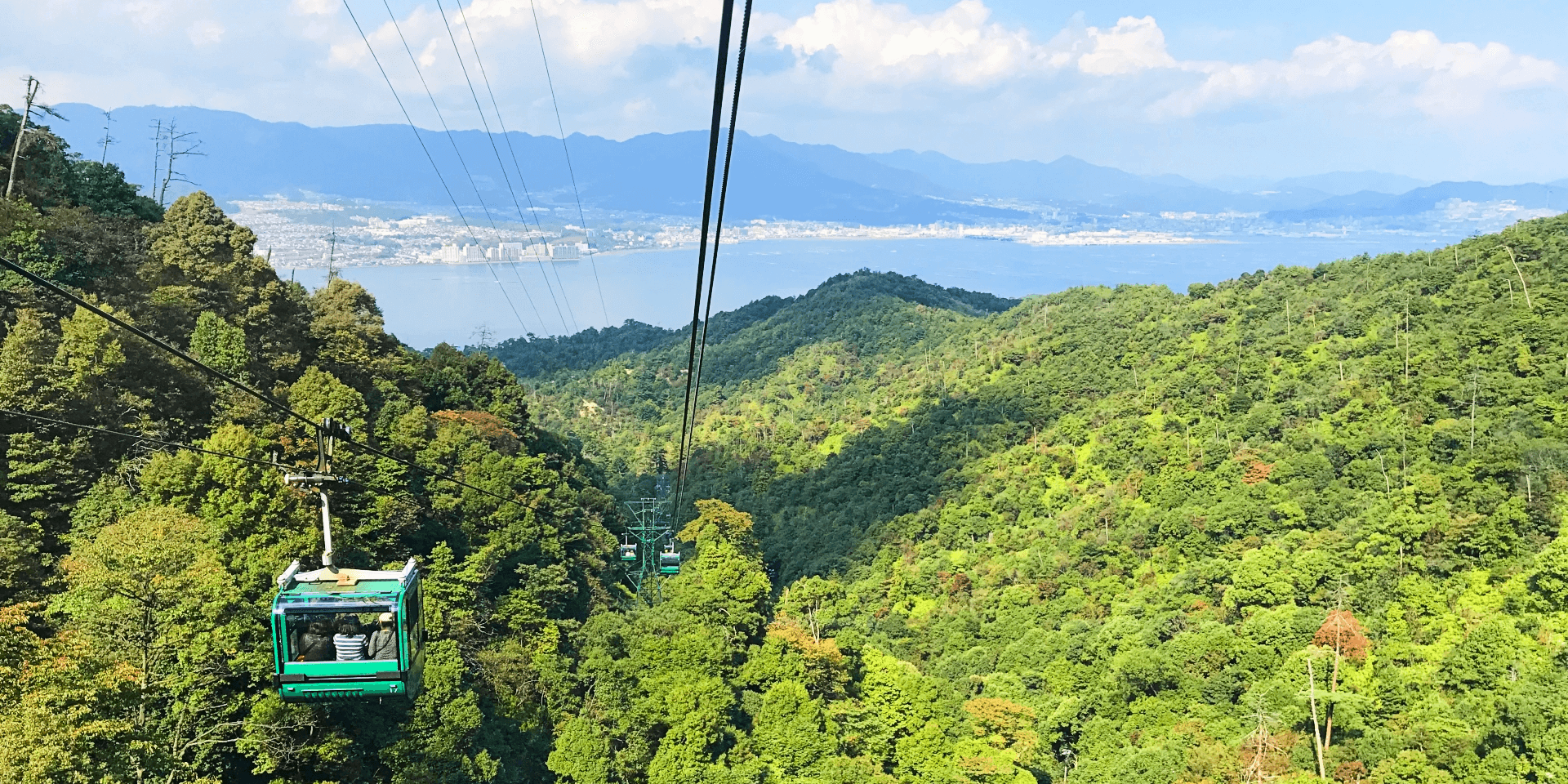
Don’t fancy walking to the summit of Mount Misen? You can still enjoy the view from the island’s highest point by riding the Miyajima Ropeway. Operating all year round from 09:00 to 17:00, the ropeway base station is around a 20-minute walk from Itsukushima Shrine. There is also a free shuttle bus which takes guests from the Momijidani park entrance behind Itsukushima Shrine to the Ropeway station entrance, but it only runs every 20 minutes and has very limited seating. From the ropeway’s top station, a 1km trail leads to the summit throughout which you’ll find a couple of temples to explore.
For visitors who have a bit more time to spend in Hiroshima, or have already visited all the main attractions in the city center during a previous trip, we recommend our 1-Day Miyajima Tour. Along with your guide, you will have the opportunity to explore Itsukushima Shrine, Daisho-In temple, and other locations on the island. You will also be able to ride the ropeway to the top of Mt. Misen and enjoy a short hike to the mountain's summit. By spending a full day on the island, guests will be able to truly bask in it's tranquil atmosphere without having to rush or hurry along.
16 / ENJOY SAKE TASTING IN SAIJO / all year round
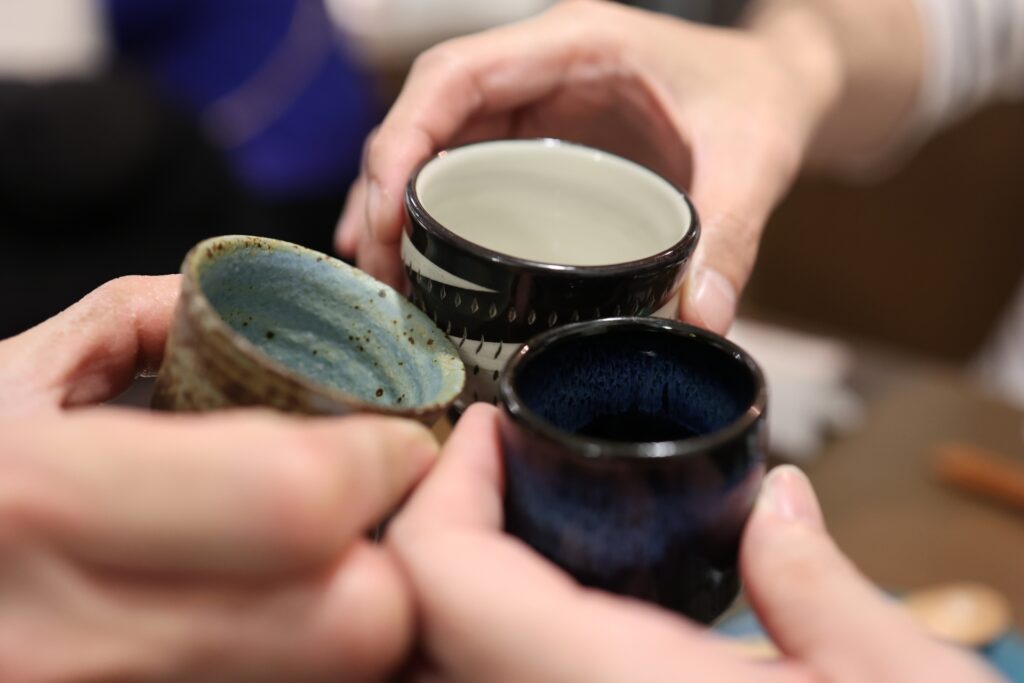
Known as one of Japan’s “Sake Capitals,” Saijo is a town located in the eastern part of Hiroshima prefecture. This area has been blessed with the perfect natural conditions for brewing sake, and as such, it is home to many different breweries which to this day continue to produce their sake using traditional techniques. In fact, every October Saijo hosts a 2-day sake festival which draws the largest crowds that this otherwise quiet town will experience throughout the whole year. During the festival, stalls lining the streets offer a wide variety of snacks, carnival games, and of course, alcohol. Special brewery tours and entry to the “Sake Square” are available through prior reservation and ticket purchasing.
Throughout the rest of the year, Saijo is a much more peaceful town which is usually not visited by large amounts of tourists and is actually more popular with locals than with foreigners. Most breweries are located within a 2 to 3-minute walk from each other and offer sake tasting at very accessible prices. It is possible to visit all seven breweries located near Saijo Station within about 2 hours, with informational signs throughout the town offering historical context and sake brewing knowledge. Visiting Saijo is a fantastic way to learn about the process of making sake while tasting many different variations of it.
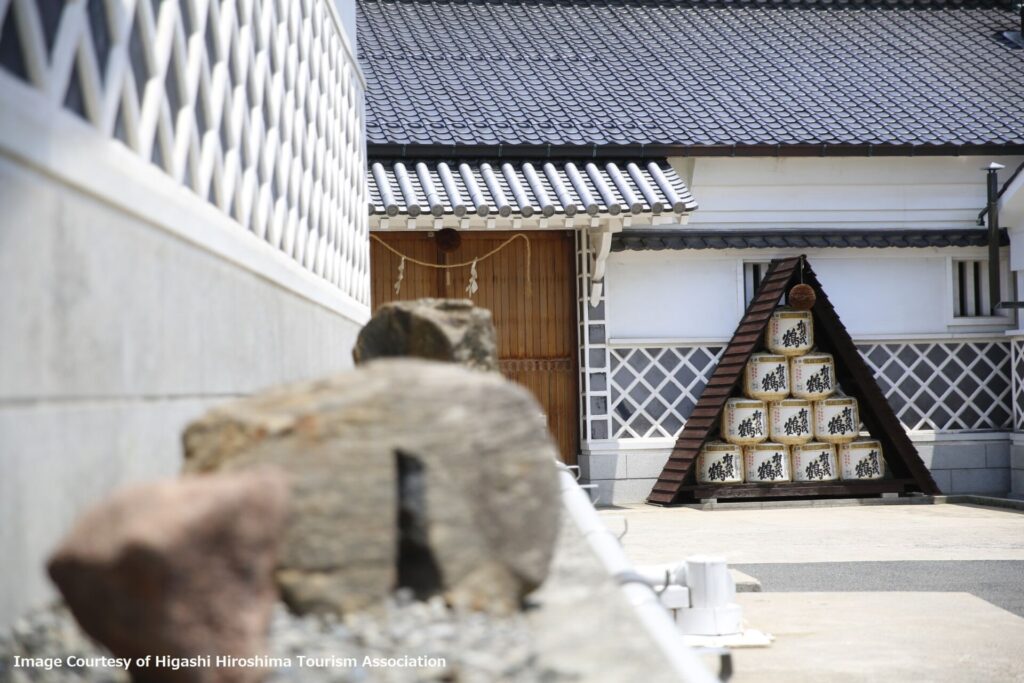
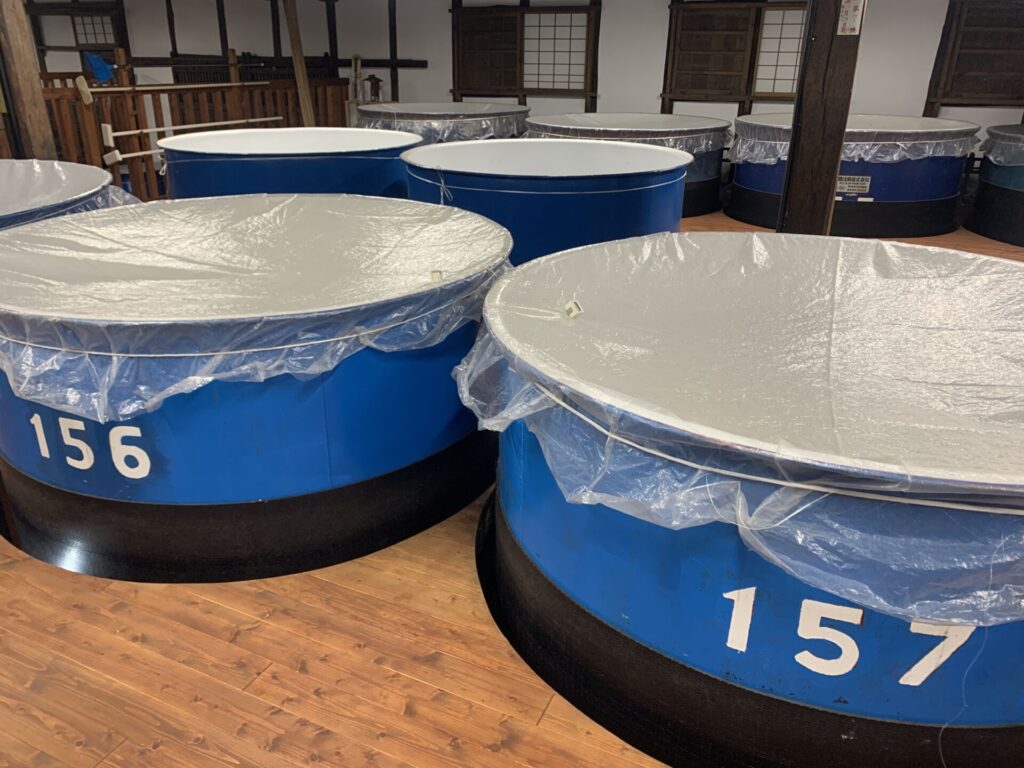
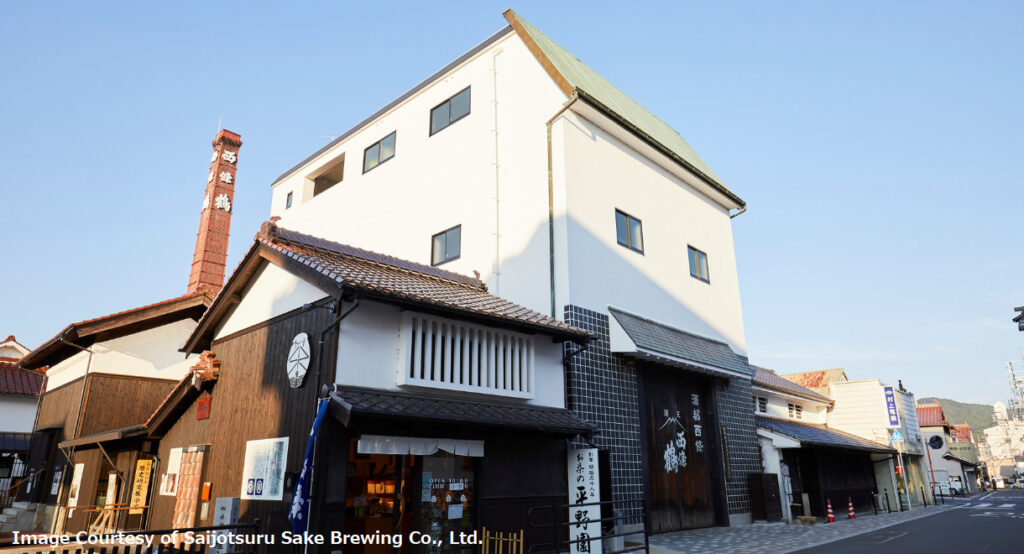
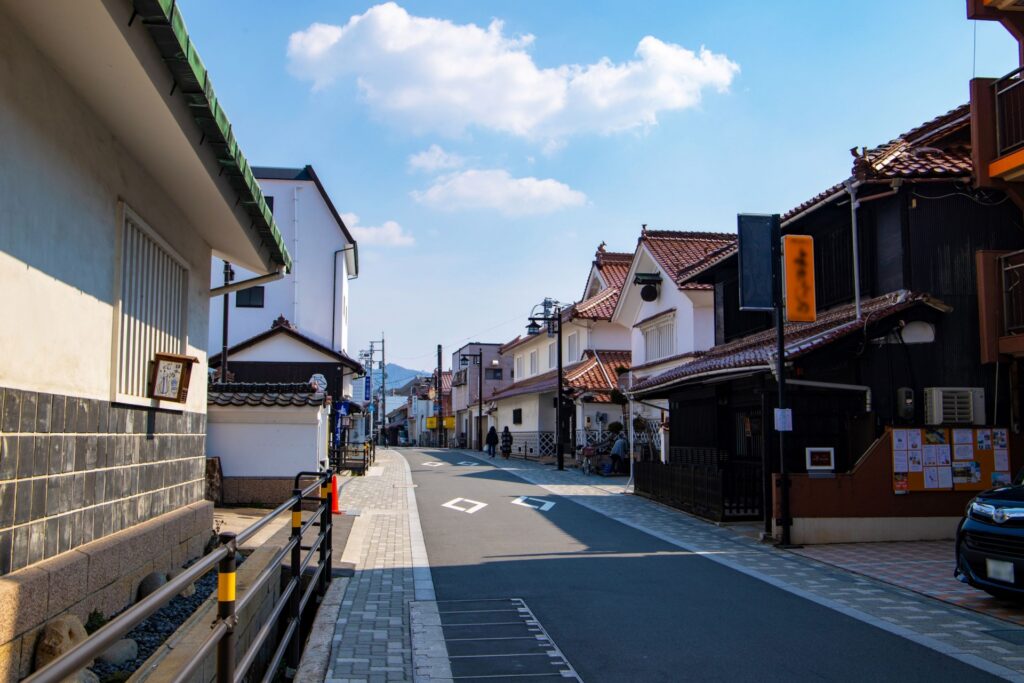
When going to Saijo it is easy to walk around the streets on your own and taste sake at some of the breweries. However, it can be quite challenging to understand all the sake-related terminology to truly appreciate the different brands and products made by the individual breweries. Additionally, for those wishing to get a tour inside and actual brewery to look at the production process, making a reservation in advance can be difficult. For these reasons, we highly recommend our half-day Saijo tour, which includes sake tasting, a tour inside a brewery, and thorough explanations of the history of Saijo and the sake brewing process. Being only a half-day tour, guests can also make a good use of their time and be able to participate in other tours or experiences.
Half-Day Saijo Tour: Sake Tasting & Inside Brewery Tour in Hiroshima's "Sake Capital"
- Spots:
- Pick-up:
- Drop-off:
17 / SHIMANAMI KAIDO / all year round
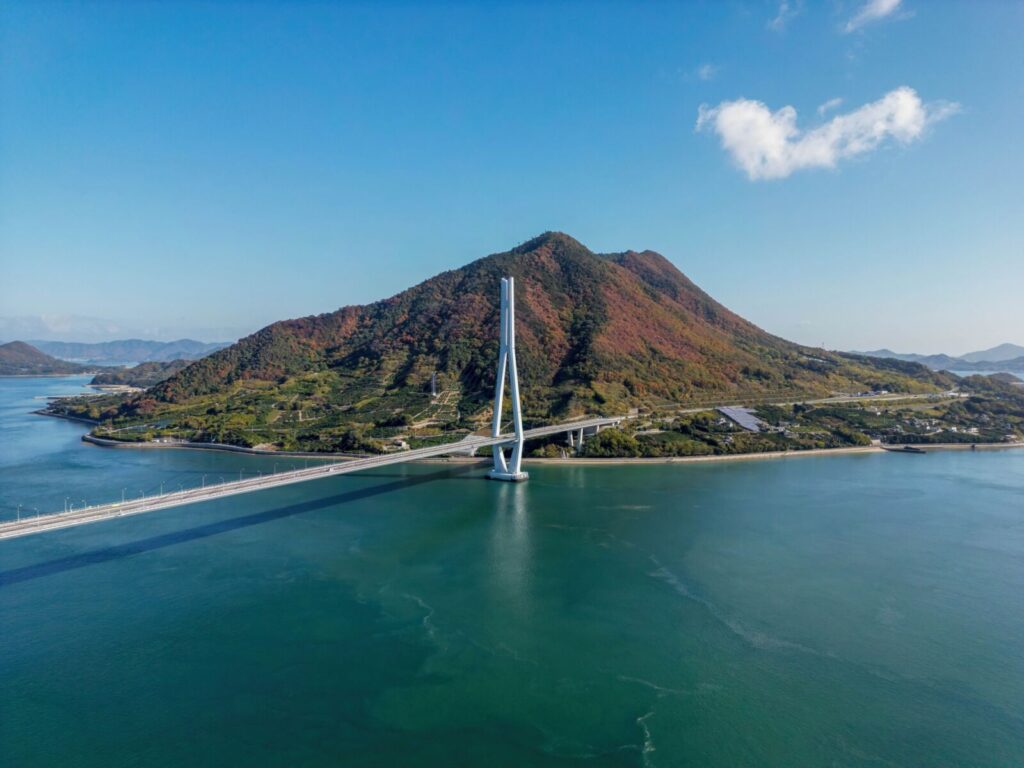
Shimanami Kaido is a cycling road which extends for 70 km between the cities of Onomichi and Imabari. The road connects two of Japan’s main islands, Honshu and Shikoku, as well as links together many of the smaller islands in the Seto Inland Sea. This road attracts cyclists from all over the world and thus has many facilities available to make the experience as smooth and enjoyable as possible. There are multiple bike rental facilities, ferries with bike space, and cyclist-friendly accommodations which make this a fairly accessible and stress-free experience. There are also different routes one can complete, such as the beginner, short, and full courses. It is not only a great activity for cyclists, but also those wishing to enjoy the beautiful scenic landscapes of the Seto Inland Sea and the stunning locations in each of the separate islands.
18 / ONOMICHI TEMPLE WALK / all year round
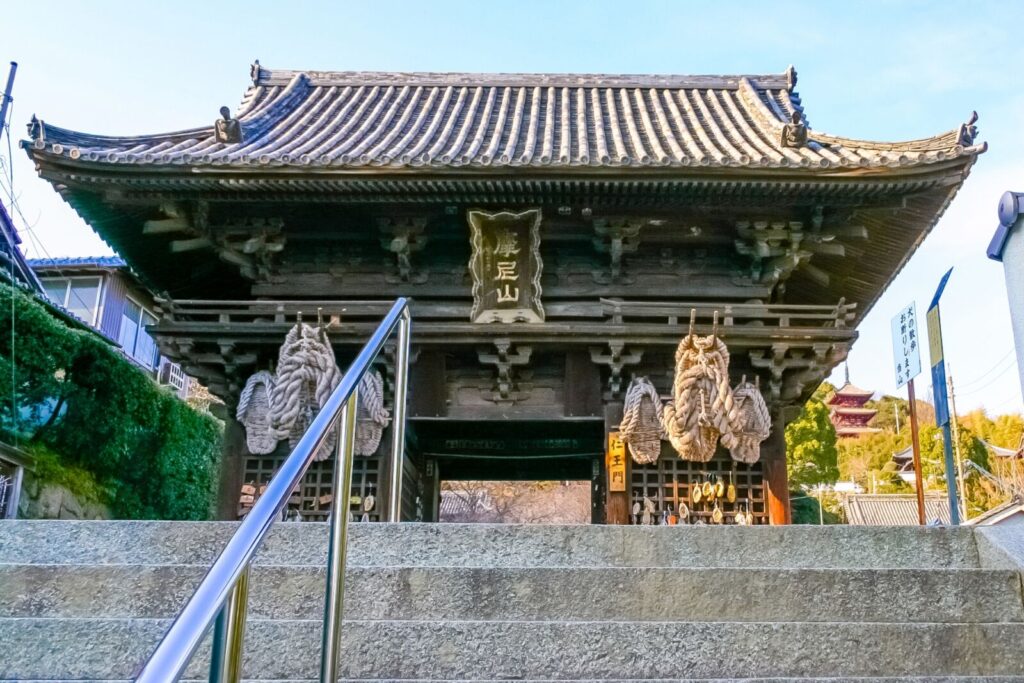
Onomichi is a city rich in history and culture, attracting many tourists throughout the year who wish to visit its multiple iconic temples. Thus, a 2.5 kilometer “temple walk” was born which allows guests to visit all of Onomichi’s 25 temples. This route can be covered in a couple of hours but can be best enjoyed by leisurely exploring the different locations throughout a whole day.
The temples vary greatly in size and popularity, the most famous one being Senkoji-ji which sits near the top of Mt. Senkoji. This temple can be accessed on foot or via ropeway all year round. Other popular temples include Saikoku-ji, with its unique straw sandal-adorned gate, and Jodo-ji, the oldest one in the city.
While visiting 25 temples can be a rewarding and special experience, we realize that some travelers might prefer to visit fewer and only the most relevant locations. The 1 hour and 40 minute journey on the local train from the city of Hiroshima to Onomichi might also prove to be too long for those who are considering visiting the city. Thus, we have designed a tour which includes a visit to the popular Senko-ji and Saikoku-ji temples mentioned above, as well as a stop along the way for some sake tasting in the town of Saijo. Click "Book Now" to enjoy this carefully planned and convenient tour of Onomichi!
19 / EXPLORE ONOMICHI’S ISLANDS / all year round
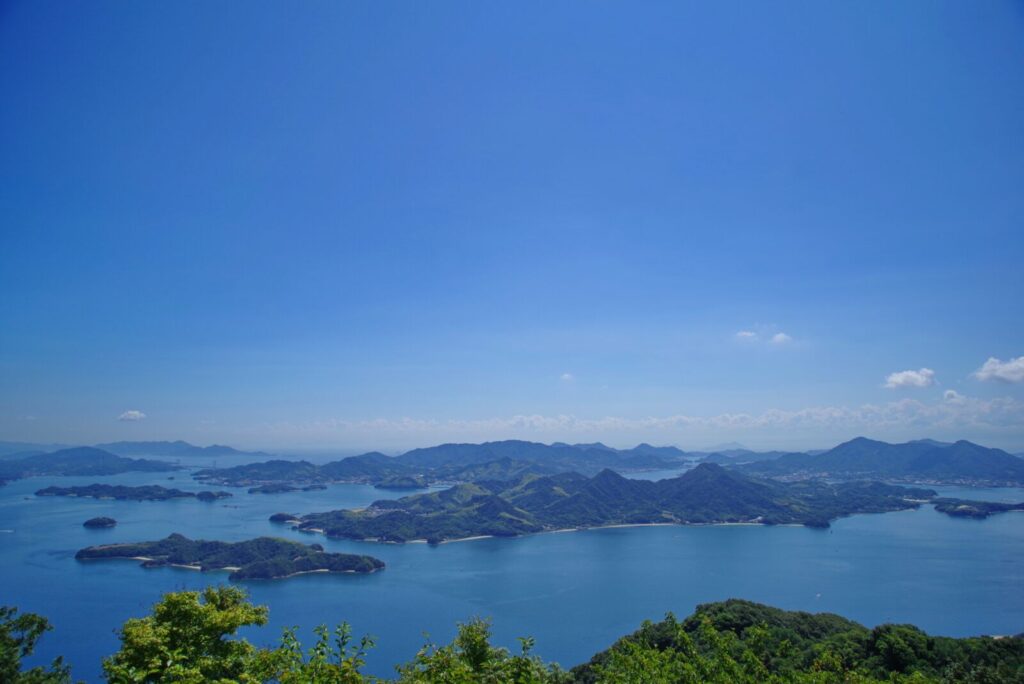
Near the coast of Onomichi lie several islands which further amplify the beauty and charm of the city. Located closest to the coast is Mukaishima, with its own small version of the famous Itsukushima shrine “floating” O-torii gate as well as the Takamiyama Viewpoint observation deck which provides a stunning view of the Seto Inland Sea. Innoshima island, lying further out into the sea, is known for its beautiful beaches and its steep Shirataki Mountain. Climbing to the top will allow visitors to not only enjoy a fantastic view but also encounter some of the 700 plus Buddhist statues located throughout the mountain.
Lastly, to the south of Innoshima, is Ikuchijima island, which is home to the peculiar Kosan-ji Temple, a place filled with replicas of famous halls, gates, and pagodas from other shrines and temples in Japan. Here one can also visit “The Hill of Hope,” a unique marble garden which harmonizes perfectly with the scenic backdrop of the island. As mentioned before, these islands can be accessed by bicycle, but it is also possible to get to them via bus or ferry.
For guests interested in visiting this last island listed above, we offer a tour which stops at two of Onomichi's most famous temples, Senko-ji and Saikoku-ji, as well as Ikuchijima. The tour has two convenient pick-up and drop-off locations, one at Shin-Onomichi Station, which is one of the stops on the San’yo Shinkansen line, and the other at Onomichi Station, which is easy to reach by local train from the city of Hiroshima. Don't miss out on stopping by this unique island on your visit to Hiroshima!
1-Day Onomichi & Ikuchijima Island Tour: “The Hill of Hope,” Temples, Ropeway and Ferry
- Spots:
- Pick-up:
- Drop-off:
20 / PORT CITY KURE / all year round
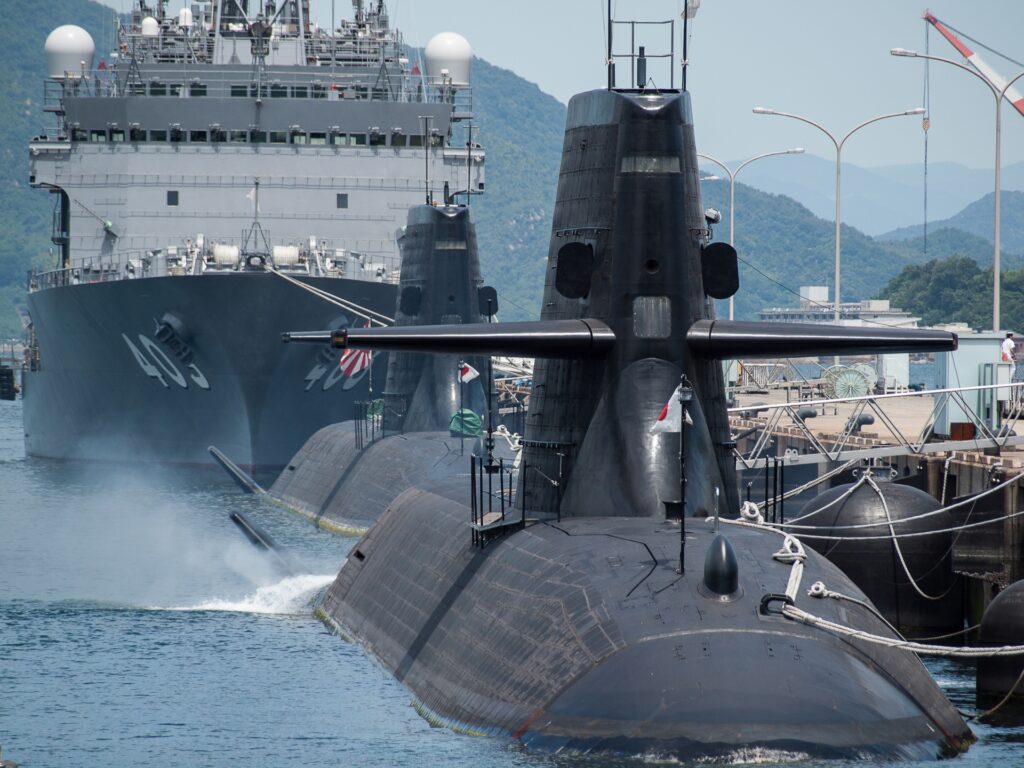
Chosen to be one of Japan’s main four naval bases during the Meiji period, the naval port town of Kure is without a doubt one of Hiroshima’s most historically relevant cities. Today, Kure still serves as a base for the Japanese Navy and is considered one of the greatest shipbuilding cities in the world. In fact, it was the place where the largest battleship of all time, Yamato, was constructed. Visiting Kure is a must for those interested in Japan’s military history as well as all types of maritime vessels. There are several museums throughout the city in which visitors can observe large ship models, enter historic buildings, and even walk inside a decommissioned submarine. One of them, the Yamato Museum, is famous for displaying a 1/10th scale model of the famed battleship Yamato. Kure is also not well-known among foreigners; thus, it is a perfect location to visit for those wishing to get a more unique and personal experience away from the large crowds typically found in other tourist spots.
If you'd like to stop by Kure on your visit to Hiroshima and go to the locations mentioned above, make sure to book our 1-Day tour listed below! You will even be able to board a mini cruise which will take you on a ride around Kure harbor to get a closer look at all the ships and submarines stationed there. As mentioned previously, Kure is not a big tourist hub, thus visitors might find it difficult to navigate the city on their own. By booking this tour, our experienced English-speaking guides can guarantee a smooth and relaxing experience.
1-Day Tour: Port City Kure - Cruise, Battleships, Submarines & More!
- Spots:
- Pick-up:
- Drop-off:
21 / SANDANKYO GORGE / April to November
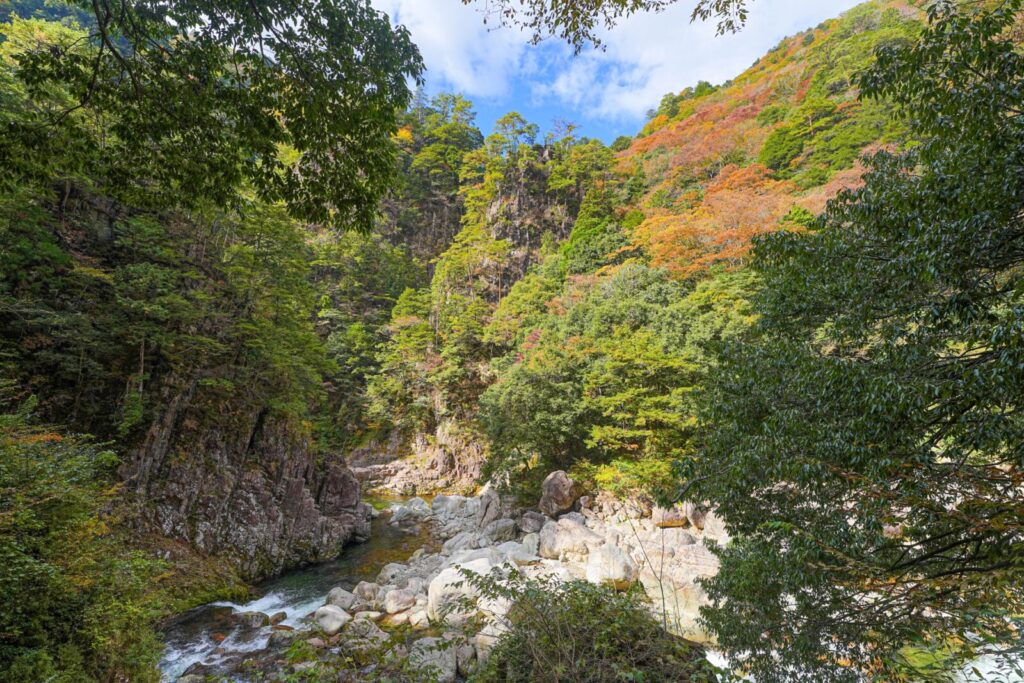
Located about an 80-minute bus ride away from the city, Sandankyo Gorge is one of Hiroshima’s natural treasures. This gorge, whose name translates to “three rivers,” extends for 16 kilometers and has been designated a Special Place of Scenic Beauty, a title awarded to only six gorges in all of Japan. Sandankyo’s beauty can be experienced firsthand through its different walking courses, with varying degrees of difficulty. It is also possible to enjoy boat rides to specific areas of the gorge and even take part in kayaking and paddle boarding experiences. Some of the most popular locations inside the gorge include Kurobuchi Pool, Sarutobi Rock, and the Nidandaki and Sandandaki Falls. With its flowing rivers, stunning waterfalls, rich plant life, and untouched nature, Sandankyo Gorge is undoubtedly one of Hiroshima’s hidden gems.
The best time to visit Sandankyo is between spring and fall, as all restrooms, restaurants, and ferry services are closed during the winter. Unfortunately, many of the most popular areas and hiking courses are currently not accessible due to road collapses and falling rocks. While it is still possible to enjoy the beautiful landscape of Sandankyo, guests must be aware that they will not be able to access most of the gorge for the foreseeable future.
22 / KINTAIKYO BRIDGE IN IWAKUNI / all year round
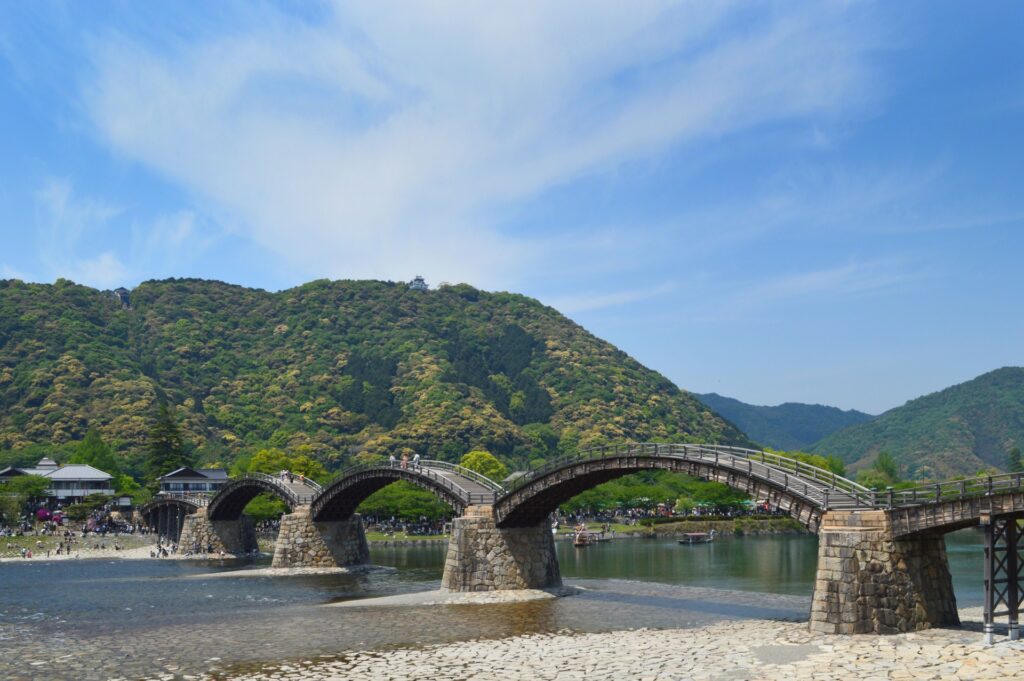
When visiting Hiroshima, tourists should not limit themselves to only exploring within the prefecture. Utilizing Japan’s efficient train system can allow you to do 1-day trips to other cities in neighboring prefectures. One such city is Iwakuni, which is located in Yamaguchi Prefecture to the west of Hiroshima. Just a 50-minute train ride away from Hiroshima Station, Iwakuni is home to the Kintaikyo Bridge, one of Japan’s three most famous bridges. Particularly stunning during the cherry blossom season, Kintaikyo attracts many local and foreign visitors who wish to admire this marvel of engineering from up close. However, Iwakuni is more than just its bridge, and has plenty more to offer. The area around Kintaikyo is known as the “Castle Town” and includes popular sites such as Kikko Park and the Iwakuni Castle. This castle can be found at the top of Mount Shiroyama and can be accessed via ropeway. There are multiple museums in the area which help tell the story of the city and reveal the important cultural and historical heritage of Iwakuni.
For those looking to thoroughly explore the Iwakuni castle town area at a relaxed pace, we recommend our 1-Day Iwakuni tour. Not only will you be able to cross the Kintaikyo Bridge, ride the ropeway to the top of the mountain, and visit Iwakuni Castle, but also take part in a unique seal engraving experience. Click "View Details" on the tour card below to find out more information about seal engraving and this tour's robust itinerary.
1-Day Iwakuni Tour: Kintaikyo Bridge, Castle Town & Seal Engraving Experience
- Spots:
- Pick-up:
- Drop-off:
If you are a bit shorter on time and can't fit a full day in Iwakuni into your schedule, there is another option available. With our 1-Day Miyajima and Iwakuni Tour, travelers can still get the opportunity to admire the Kintaikyo Bridge while also making sure to visit the famous island of Miyajima. In just one day, you will be able to explore two of Japan's most iconic landscapes.
1-Day Miyajima & Iwakuni Tour: Exploring the Most Iconic Japanese Landscapes
- Spots:
- Pick-up:
- Drop-off:
23 / TAKEHARA TOWNSCAPE CONSERVATION AREA / all year round
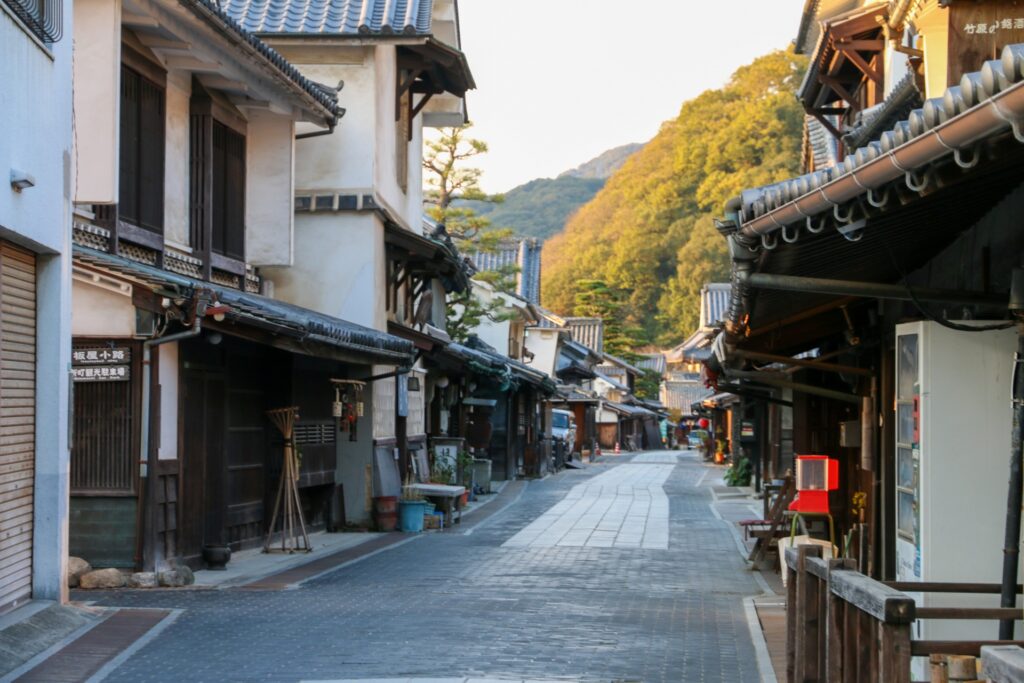
Takehara is a small yet charming city in Hiroshima Prefecture which is located on the coast of the Seto Inland Sea. In the past, Takehara flourished due to its sake and salt production, and while salt is no longer produced in the area, some of its old sake breweries still remain in business. In order to preserve the historic and cultural heritage of the city, a small part of it was designated as the Takehara Townscape Conservation Area. Here, former merchant houses, shrines, and other structures still retain their appearance from over 200 years ago. The townscape itself is free to access, so tourists can enjoy walking down the tranquil and old-fashioned streets. Additionally, old family residences and museums can be entered for a small fee to enjoy a more complete experience. Takehara is a great stop to make on the way to Rabbit Island, and guests would be remiss not to visit the townscape area given the opportunity to do so.
24 / VISIT RABBIT ISLAND / all year round
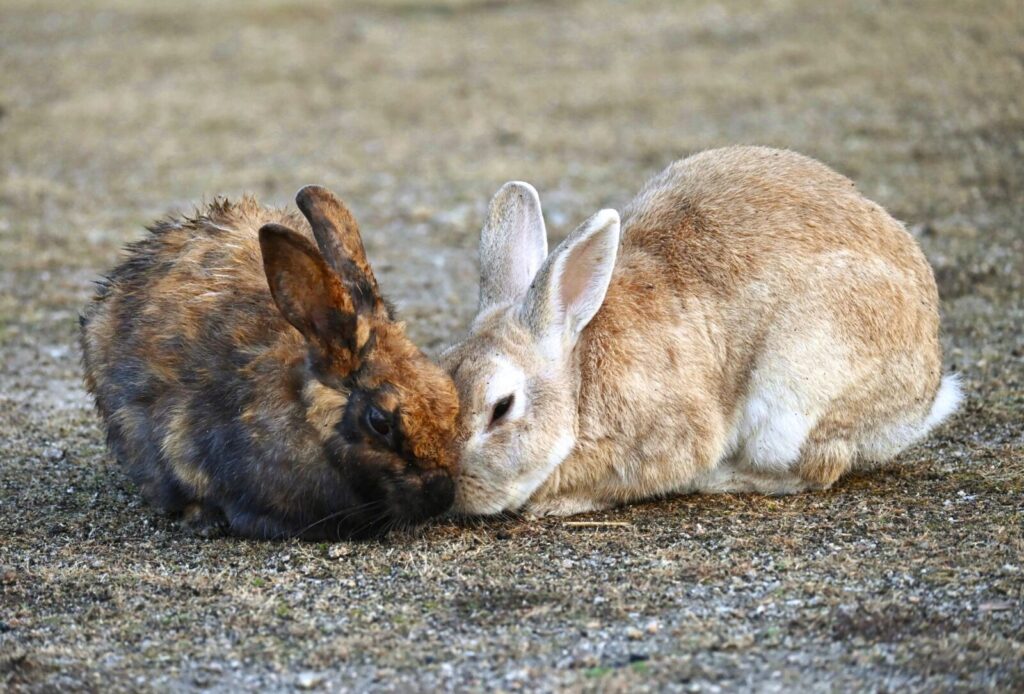
Japan is well known throughout the world for its animal islands and villages. One of the most popular is actually located in Hiroshima Prefecture. Ōkunoshima, popularly known as “Rabbit Island,” is a fluffy paradise where one can spend the entire day surrounded by wild rabbits. Visitors can purchase rabbit food at the port before boarding the ferry to the island or bring their own fresh produce to feed the animals. Ōkunoshima’s main attraction is its rabbits but there is also a hotel on the island where guests can choose to stay overnight or even rent bicycles and electric scooters during a day trip.
Additionally, this island full of adorable creatures houses a dark past which becomes evident through the large ruins found all around the area. In the past, Ōkunoshima served as a military base for Japan and at one point became a confidential poisonous gas production site. Today, one can visit the former military and poison gas factory ruins to learn about the sinister past of the island. Guests can visit Rabbit Island to not only enjoy the cute animals but also learn more about Japan’s military history.
Getting to Rabbit Island requires boarding a highway bus from the city of Hiroshima, and for those wanting to make a stop along the way in Takehara getting the timing right can be quite tricky. Thus, we offer a tour in which our guides will handle all the traveling logistics and you will only have to worry about spending a lovely day exploring the historic townscape of Takehara and hanging out with adorable rabbits. Click the "Book Now" button below to make your reservation today!
25 / FUKUYAMA CASTLE / all year round
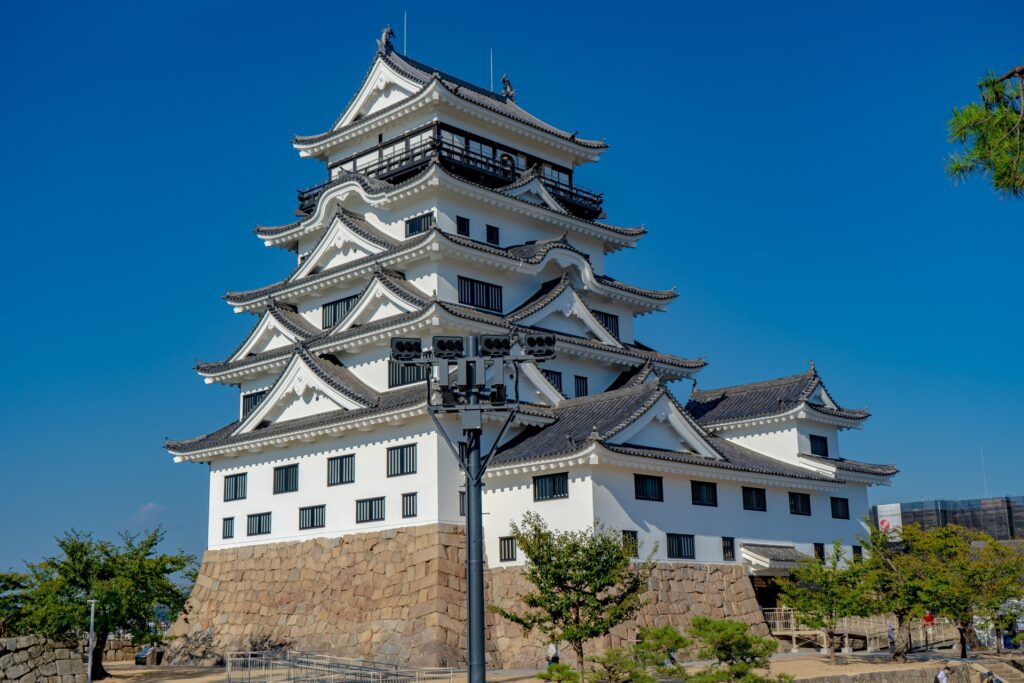
Built in 1622, Fukuyama Castle is of formidable size and possesses great historic significance. The castle’s imposing structures are connected to its original purpose: a way to intimidate the feudal lords who lived on the western side of the country and far away from the capital city. It was intended to discourage potential uprisings and demonstrate the authority of the Shogun, Japan’s military leader. The large five-tiered main keep at the center of the castle grounds has now been converted into a museum which provides information about the origins of the castle and its different lords. As the only castle keep in Japan protected by iron-plates on one of its outside walls, it is also a unique site to behold. While most of the original structures of the castle were either demolished after its abandonment in 1873, or destroyed during the World War II air raids, the city of Fukuyama underwent the challenge of restoring the area to its former greatness. Thus, this castle stands as not only a window into Fukuyama’s past but also a testament to the dedication and commitment of its citizens today.
26 / TOMONOURA / all year round
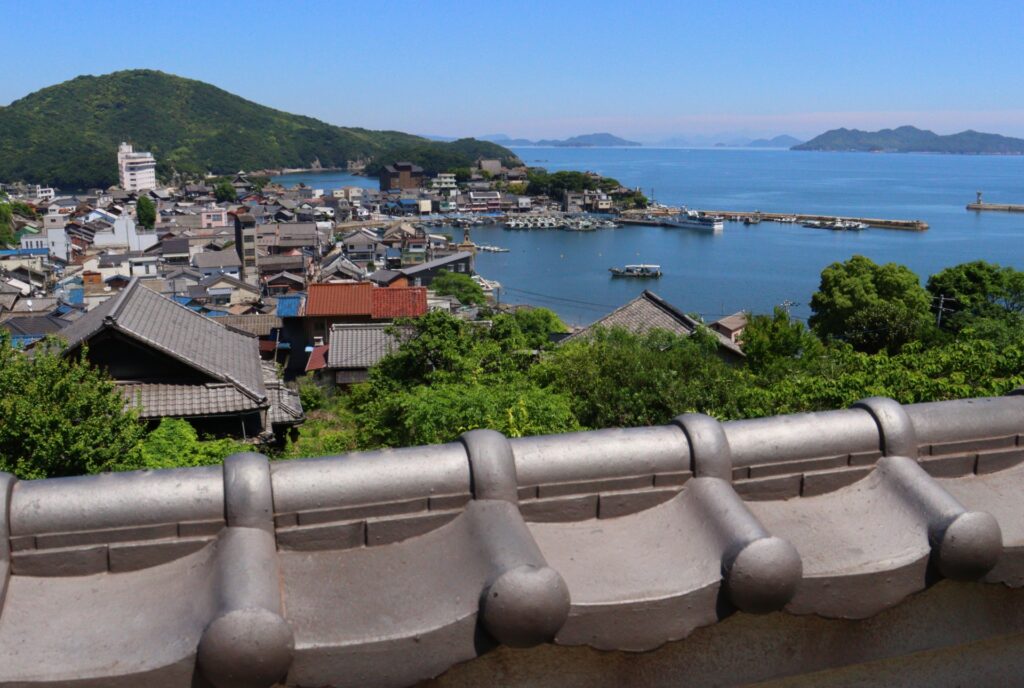
The scenic port town of Tomonoura is a must-see location within the city of Fukuyama. The town first began to flourish in the 7th century as a strategic location for boats to wait for favorable sailing weather, and to this day it retains the appearance of a historic port. Some of the facilities still remaining in the area, such as the lighthouse and the tiered dock, date back to the Edo Period. The shops and homes lining the streets resemble old Japanese merchant houses, and the area is packed with shrines and temples of varying sizes. It is a fantastic place to enjoy a peaceful stroll by the seaside while getting a glimpse of “old Japan.” A nearby uninhabited island, Sensui-jima, is also easily accessible via a 5-minute ferry ride and its abundant nature serves as a nice contrast to the structure-packed Tomonoura.
You can visit both Fukuyama Castle and Tomonoura with our 1-day tour of Fukuyama. Conveniently starting and finishing at Fukuyama Station, this tour takes advantage of the stops on the San’yo Shinkansen line. For travelers who don't wish to go all the way to Hiroshima just for the typical tourist spots, this is a perfect way to spend the day when traveling into or out of Hiroshima city. Leave your bags at the train station, don't worry about booking a hotel, and enjoy the wonderful sights of Fukuyama!
1-Day Fukuyama Tour: Castle, Tomonoura Port Town, and Sensui-jima Island Visit
- Spots:
- Pick-up:
- Drop-off:
27 / OKAYAMA CASTLE & KORAKUEN GARDEN / all year round
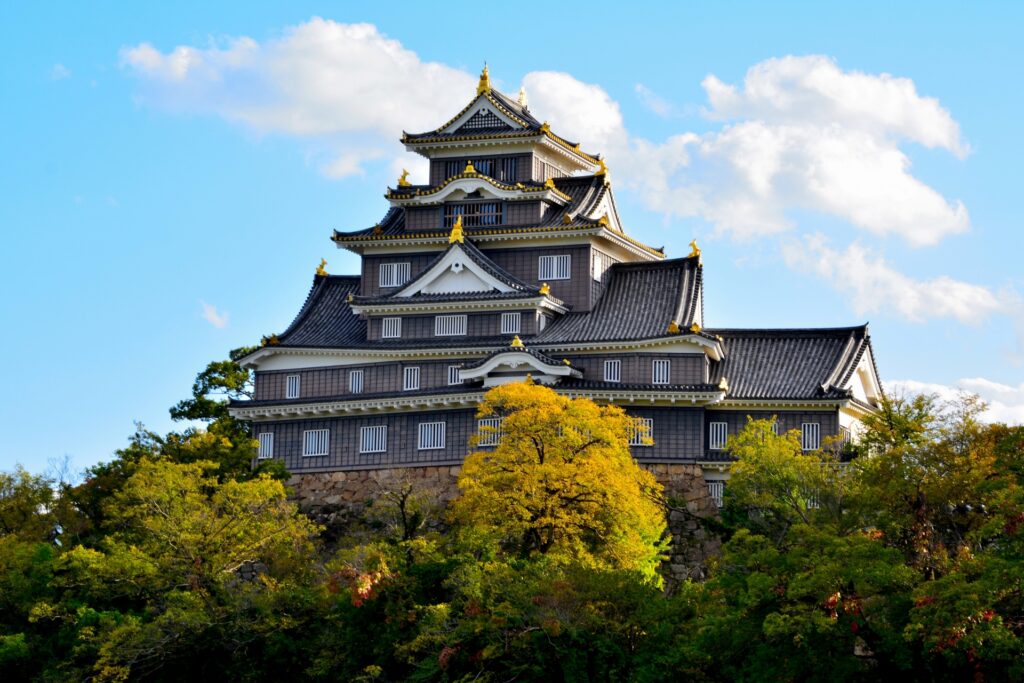
As mentioned previously, it is not necessary to limit oneself to Hiroshima Prefecture when visiting the western region of Japan. Lying about halfway between Osaka and Hiroshima is the beautiful Okayama Prefecture, also known as “the Land of Sunshine.” This prefecture, with its fantastic weather, delicious fruit, and scenic spots, is a perfect place to stop by on the way to Hiroshima or when returning from it. When visiting Okayama, it is essential and quite easy to tour two specific spots: Okayama Castle and Korakuen Garden. These two places are located within Okayama city and a 5-minute walk from each other. They can be effortlessly reached from Okayama Station by bus.
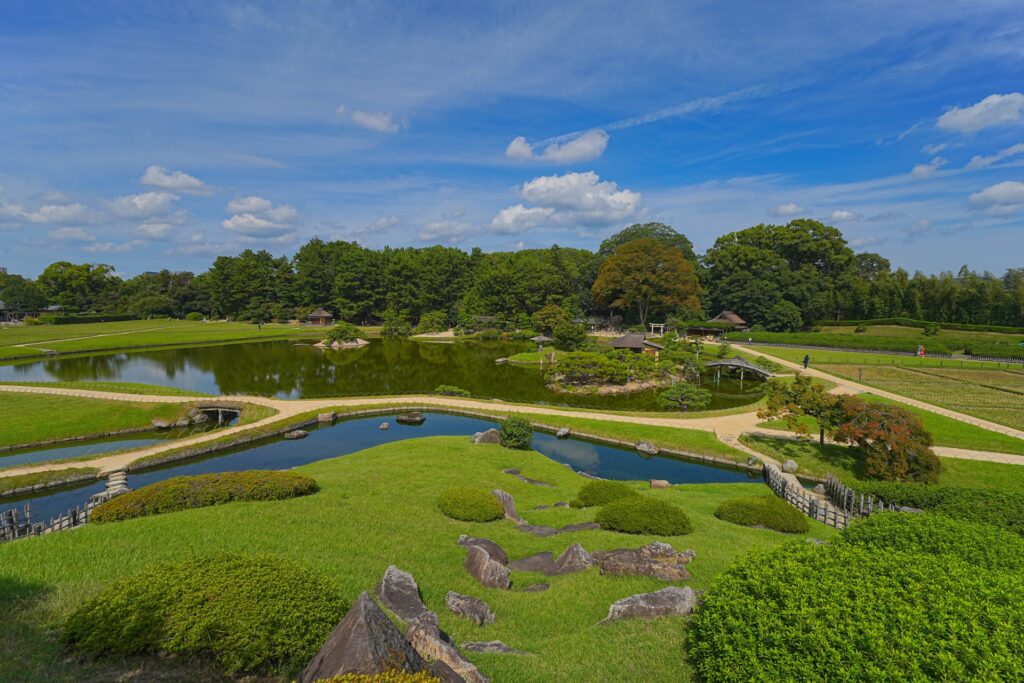
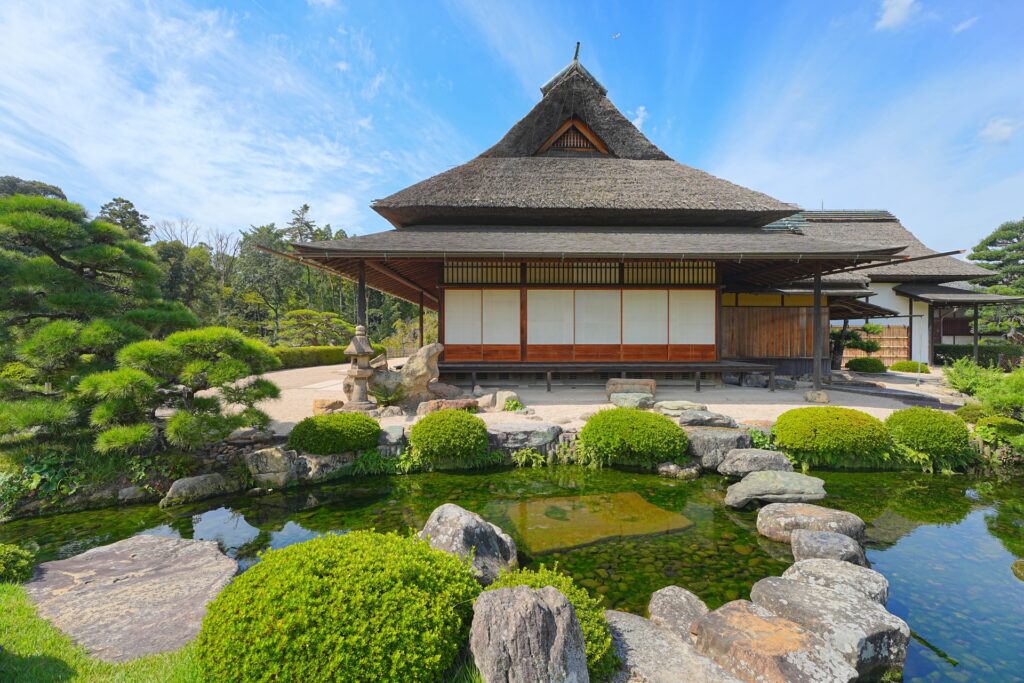
The Okayama castle tower is quite a sight to behold from the outside given its unique black color and is worth experiencing from the inside as well since it houses a museum telling the history of the prefecture. Korakuen Garden, one of Japan’s three most famous gardens, is spacious, refined, and most definitely worthy of such a title. Its construction began in 1687, and it still retains the charm and beauty of the Edo period. Korakuen Garden is brimming with tea houses, shrines, ponds, and groves; thus, visitors can spend more than one hour exploring the entire area. We definitely recommend stopping by these iconic locations when visiting western Japan.
28 / KURASHIKI BIKAN HISTORICAL QUARTER / all year round
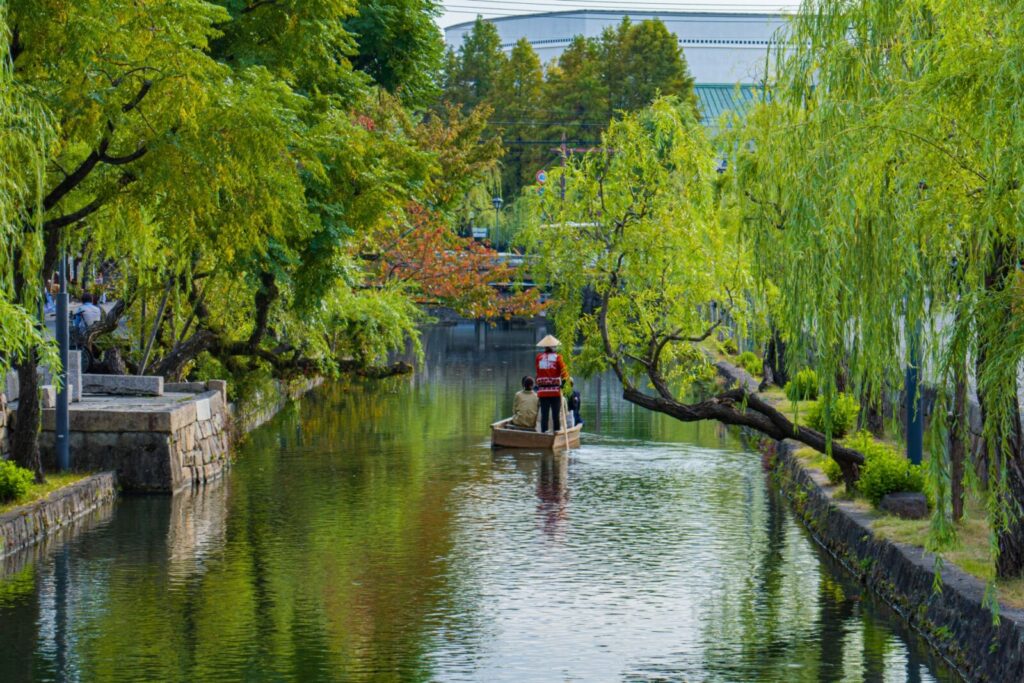
Arguably an even more popular tourist spot within Okayama Prefecture, the Kurashiki Bikan Historical Quarter provides an opportunity for visitors to step into the past. Originally a merchant town, the old Japanese-style storehouses and former family residences have been preserved to create a quaint and picturesque landscape which tourists flock to all year round. The views inside the historic area are so beautiful that renting a kimono or yukata (traditional Japanese garments) for taking pictures has become quite popular. Many rental establishments are spread around the different streets, making the service easily accessible to everyone. The Kurashiki Bikan Historical Quarter is also popular for the canal which flows down its center, and where visitors can enjoy a scenic ride on a traditional boat. Lastly, the area is full of lively shops and eateries which provide enough entertainment to spend several hours strolling about.
If you're interested in making a stop by Okayama but are not completely sure how to fit it into your busy travel itinerary, we offer a tour which allows guests to explore the prefecture when making their way into or out of Hiroshima. Okayama lies about halfway between Hiroshima and Osaka, thus making a stop here is a great way to stretch your legs before continuing the journey by train. On this tour, guests will be able to visit Okayama Castle, Korakuen Garden, and the Kurashiki Bikan Historical Quarter, while learning about the history and culture of the prefecture from one of our experienced guides. Book now so that you don't miss out on some of Japan's most beautiful and famous locations!
1-Day Okayama Tour: Castle, Korakuen Garden, and Historic Townscape of Kurashiki
- Spots:
- Pick-up:
- Drop-off:
29 / EXPLORE SETONAIKAI NATIONAL PARK / all year round
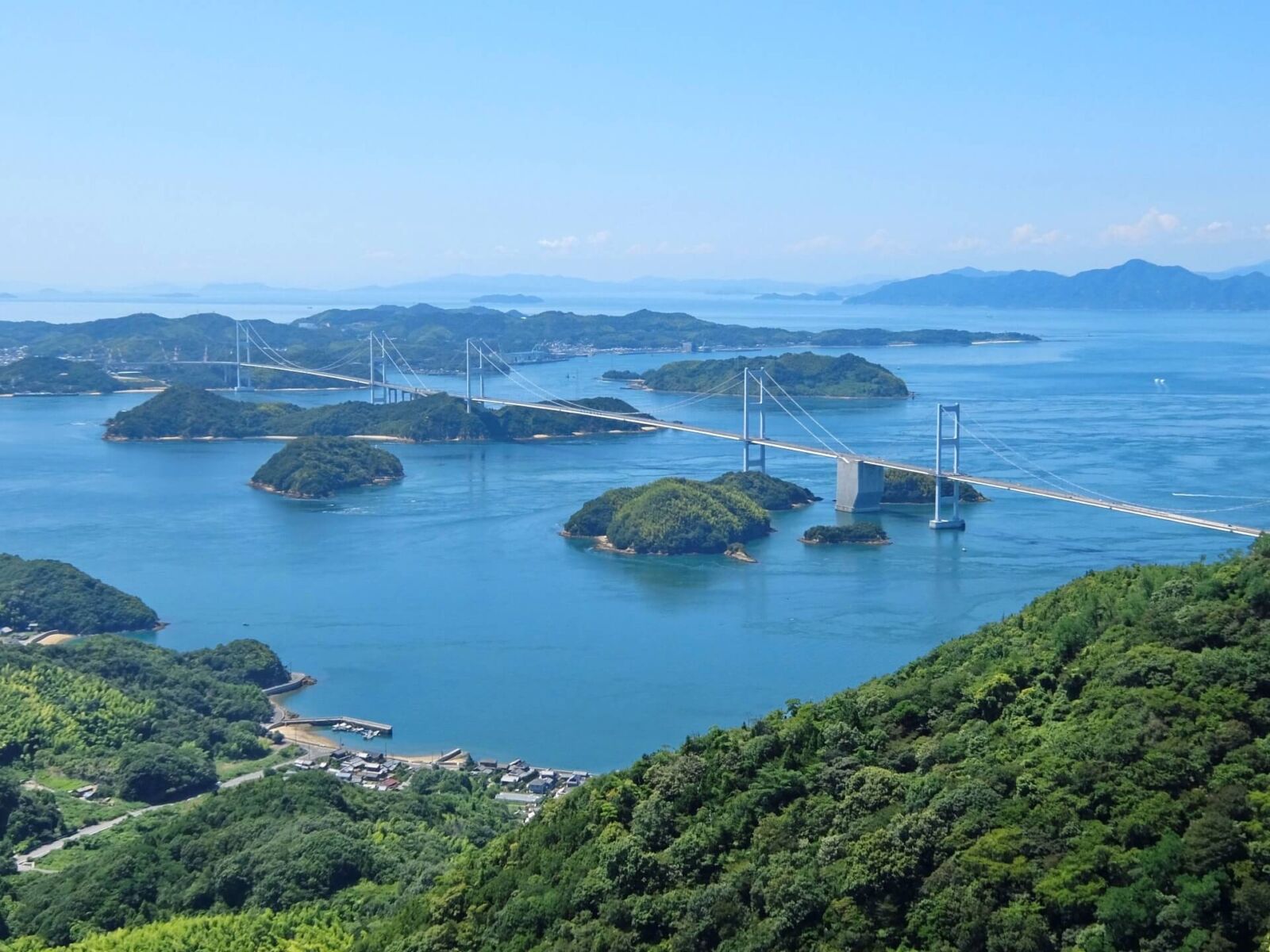
Covering 900,000 hectares across 11 prefectures, Setonokai National Park is the largest national park in Japan. The park includes a vast sea area, numerous islands and coast line from which visitors can enjoy fantastic views. Miyajima lies within the national park and as such, is a gateway into one of Japan’s most rewarding and diverse regions. The park covers much of the Seto Inland Sea, a complex area of open sea and bays connected by narrow straits and islands divided into four areas – Awajishima and its surrounding area, Bisan-Seto and its surrounding area, the Geiyo Islands and their surrounding area, and Suonada and its surrounding area. All of the islands mentioned previously on this list, such as Rabbit Island and Ikuchijima, form part of the Setonokai National Park.
The region is famous for its clustered archipelagos of islands and islets dotted throughout the calm sea which for generations has supported a rich cultural landscape and maritime industries. The national park is home to a huge range of biodiversity including finless porpoise and other sealife. Where to start and how to get there depends on your places of interest within this huge area, but trust us when we recommend that you go a bit slower and take your time to explore the region.
30 / HEAD ONTO SHIKOKU / all year round
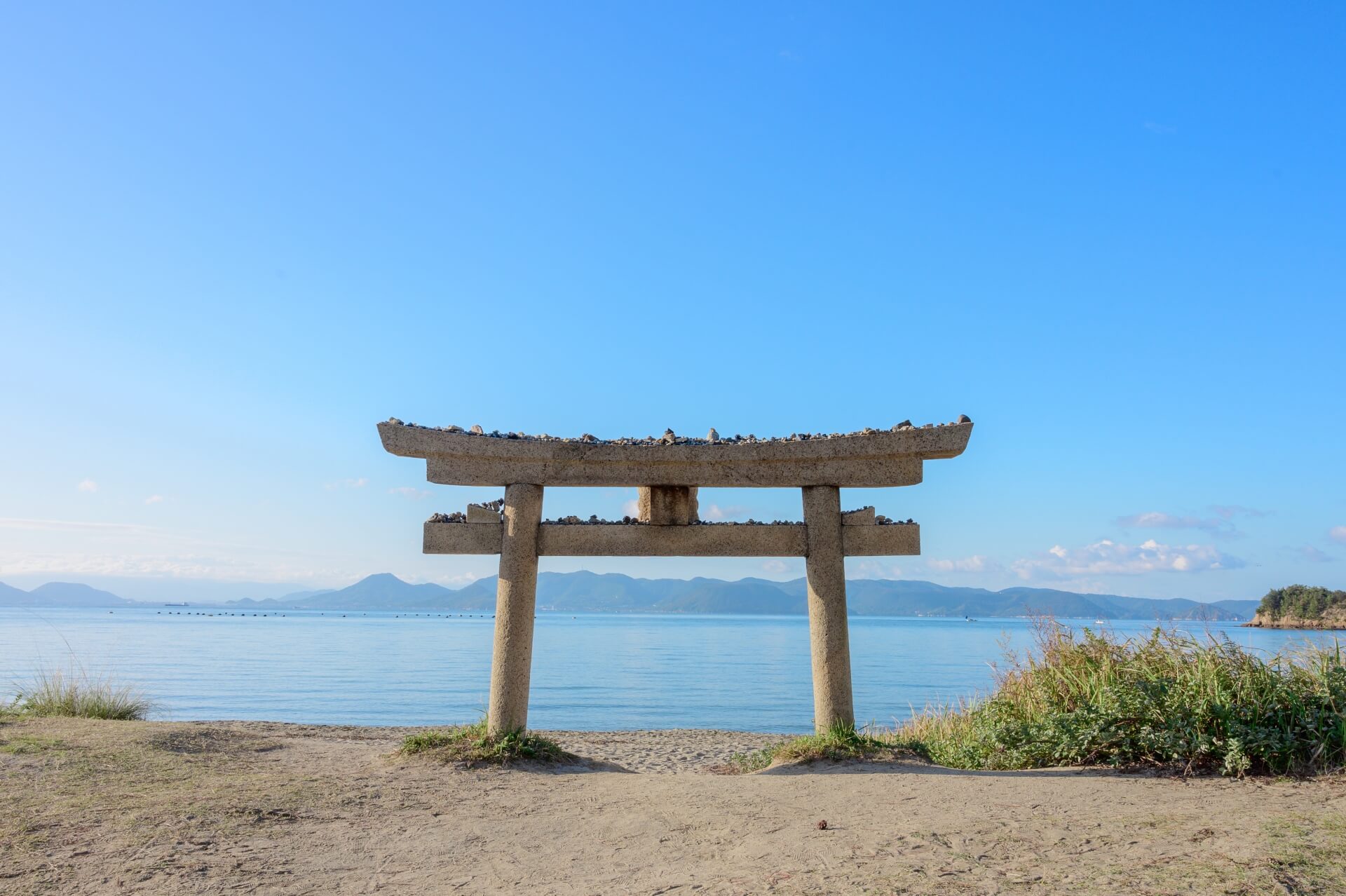
Our final recommendation for visitors heading to Hiroshima, especially those exploring the Setonaikai National Park, is to headed onto Shikoku. The smallest of Japan’s four main islands, Shikoku is also the least visited – by international visitors – region of the country for. Those who do make the journey discover an island blessed with outstanding natural landscapes including the islands and coastline of the Setonaikai National Park, surfing, great fishing and seafood, secluded river valleys and lost villages, and of course the "Shikoku Henro" or "88 Temple Pilgrimage" trial that draws visitors from all over the world. For more information about just what’s on offer, see our ’25 Things to Do Around Shikoku & Where to Stay’ page.
BEST TOURS AND ITINERARIES AROUND HIROSHIMA
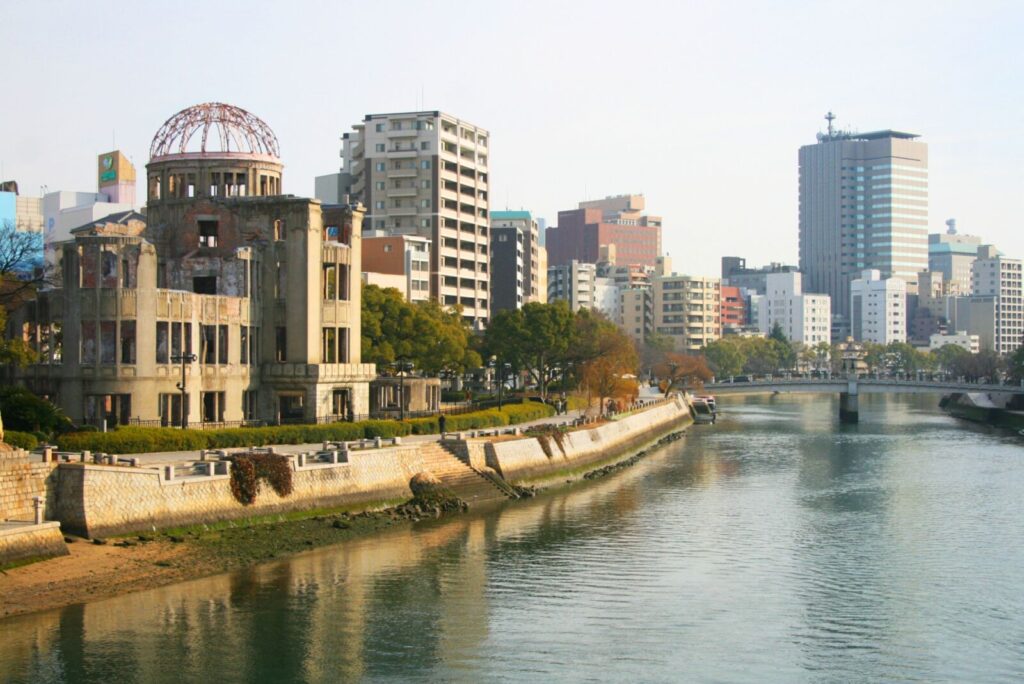
To help travelers plan their visit to Hiroshima we have created a list with all the best tours and itineraries in the area. The tour section of the page is conveniently divided into three types of tours: those taking place in the city centre, day trips starting from Hiroshima Station to locations outside the city, and tours in the surrounding region. You will also be able to find more specific information about the tours' sightseeing spots, activities, and pick-up and drop-off locations.
For further help determining which places to visit and in what order, there is also a section which covers the best multi-day itineraries around Hiroshima. Ranging from short 2-day trips, to 9-day adventures, we have created a series of engaging, convenient, and time efficient itineraries which combine our tours in different ways to create the most rewarding traveling experiences. If you're planning to spend more than one day in Hiroshima or the surrounding region, then we definitely recommend you check-out this section of the webpage.
BEST AREAS TO STAY WHEN VISITING HIROSHIMA
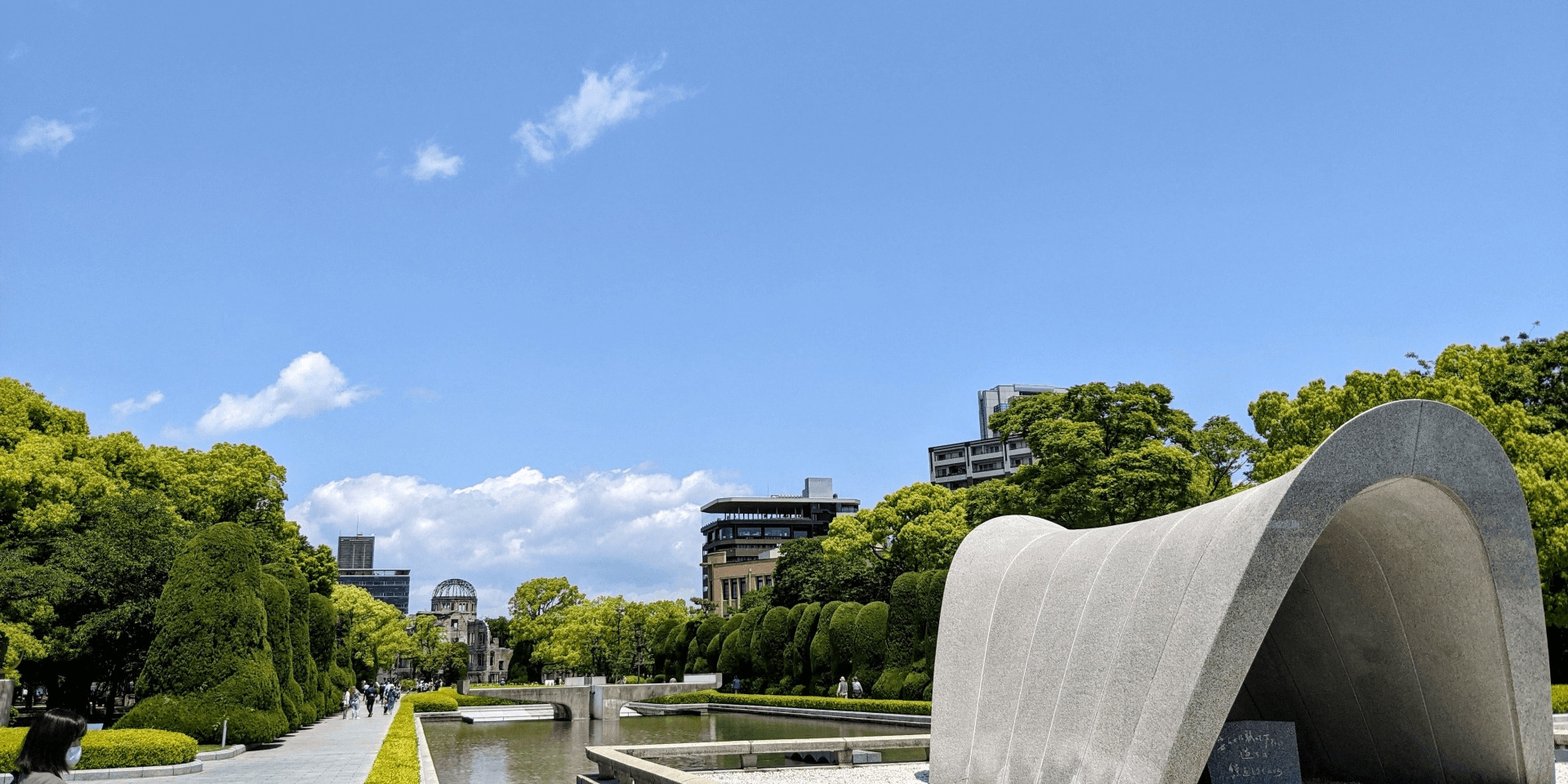
Hiroshima is a reasonably large city – to be precise, it’s the eleventh largest city in Hiroshima – with its most popular attractions spread-out over a reasonable distance. While the city isn’t big enough that the location of your accommodation can hugely affect your visit, as it can in Osaka or Tokyo, there are areas of the city that are more convenient than others starting with:
HIROSHIMA STATION AREA
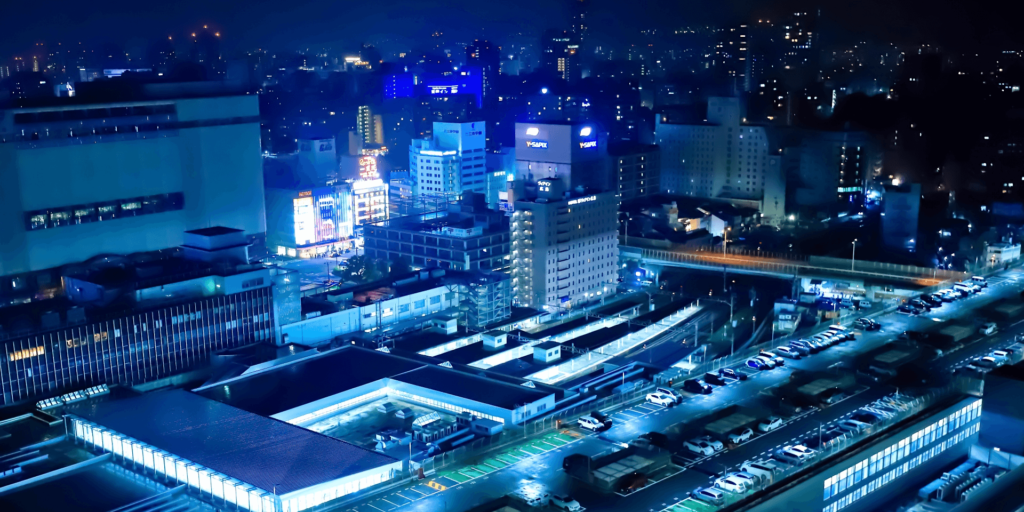
Most international visitors will travel to and from the city via Hiroshima Station, making it a logical area in which to stay. As a stop on the San’yo Shinkansen line and with tram and bus lines starting from it, the station is the easiest to move around Hiroshima. In its immediate vicinity, you’ll find a large range of accommodation including mid-size and large Western-style hotels. The majority of the city’s most popular attractions are accessible from the southern side of the station with hotels on both sides with the Sheraton Grand being a notable high-end option on the north side of the station. For more information including accommodation listings, see our ‘Hiroshima Station Area’ hotel page.
CENTRAL / HATCHOBORI STATION AREA
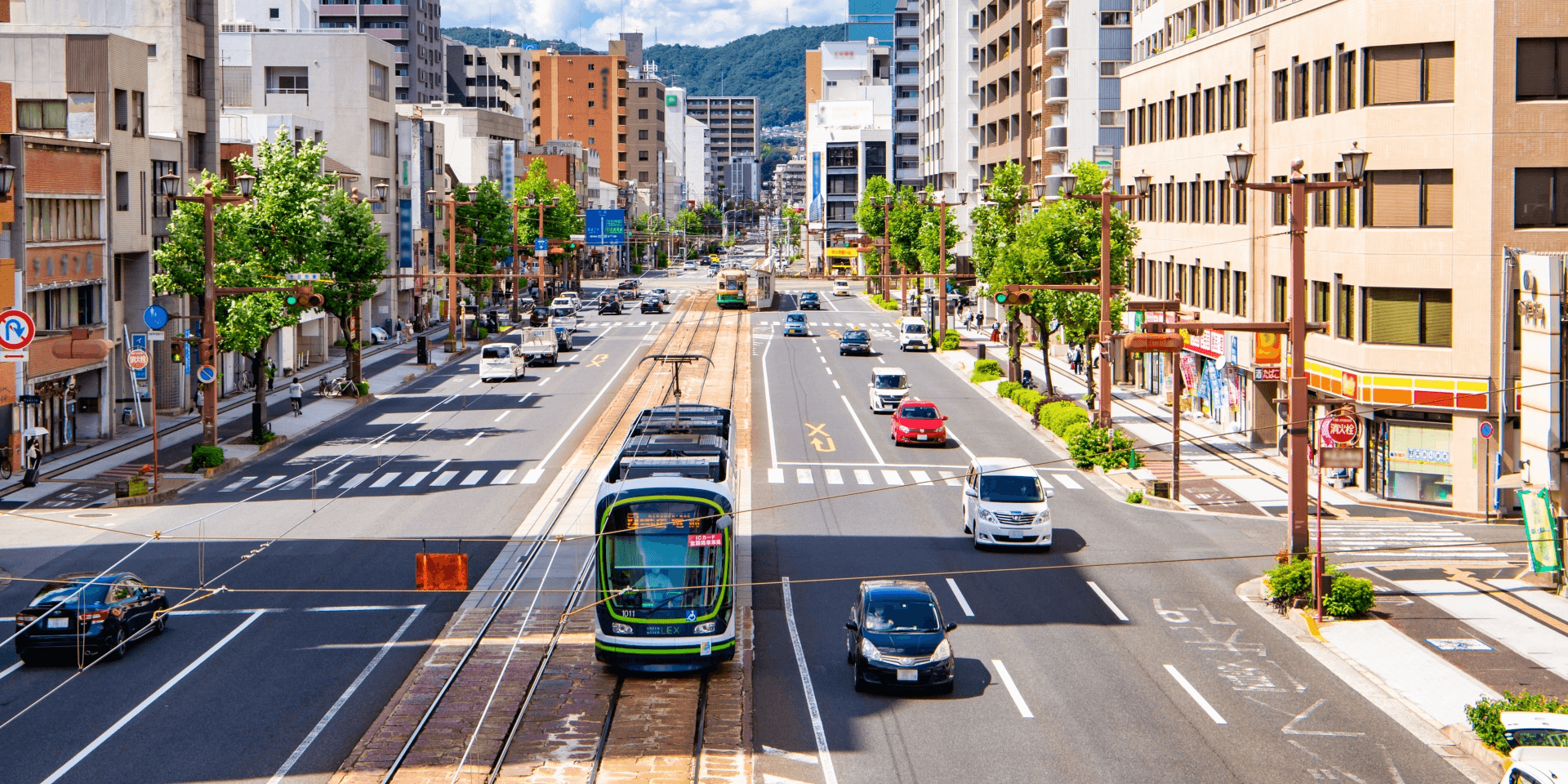
Crossing the Kyobashi River from the station, you move into the central city area, where you’ll find another concentration of accommodation. There’s plenty of hotels to choose from, most of which are mid-range to budget hotels, including mid-size business hotels. Prices are typically a little cheaper than around the station with many hotels within easy walking distance of both the station and Peace Memorial Park. You can access this area of the city via Ebisucho Staion, Hatchobori Station or Kamiyacho-Higashi Station with the area around Hatchobori considered the main shopping, dining and entertainment precinct of Hiroshima. For more information including accommodation listings, see our ‘Central / Hatchobori Station Area’ hotel page.
PEACE PARK AREA
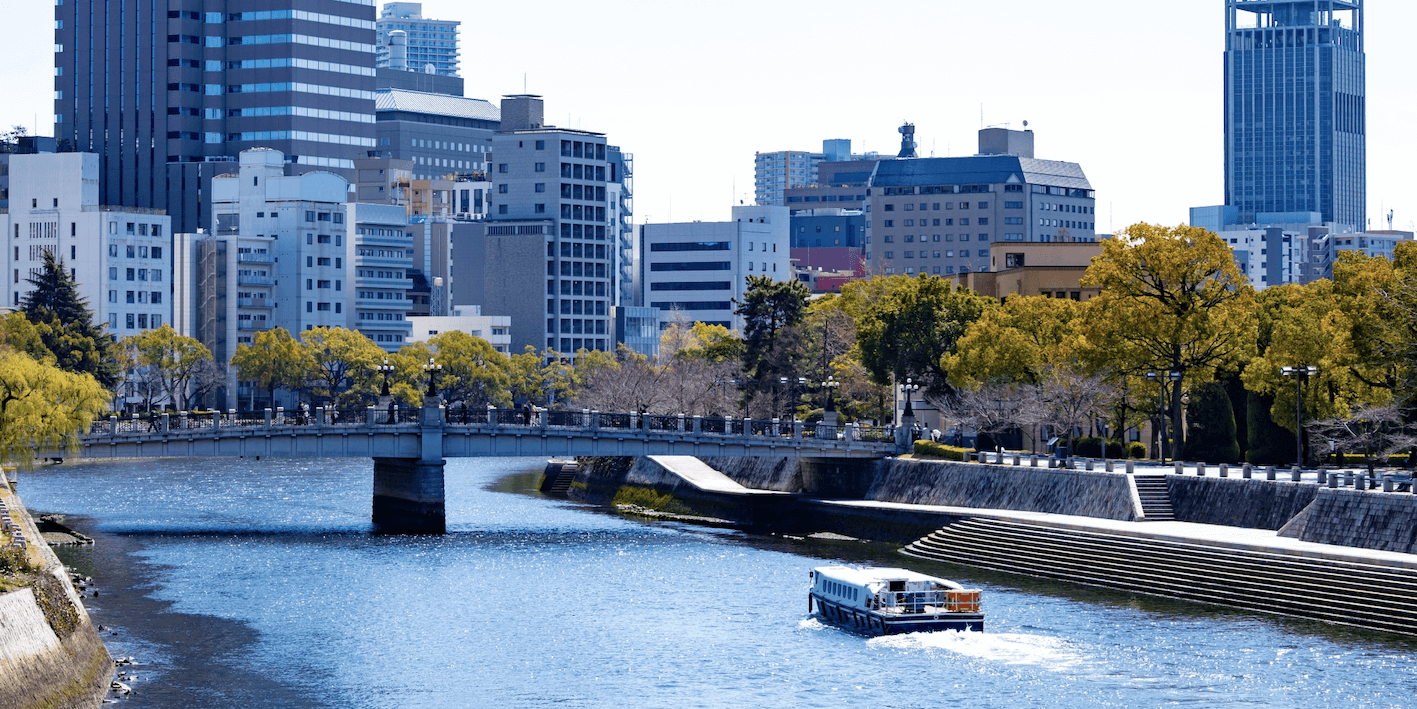
You’ll find more accommodation to the south of the Peace Memorial Park and to the west across the Motoyasu River around Tokaichi-machi Station. Prices in this area are little more expensive than the central city but not as convenient. If you’ll be spending multiple days in and around the Peace Memorial Park, staying in this area can be a good option. But if you’re only in Hiroshima for a night and want to see as much as possible, we recommend staying around the station or central city. For more information including accommodation listings, see our ‘Peace Park / Tokaichi-machi Station Area’ hotel page.
MIYAJIMA AREA
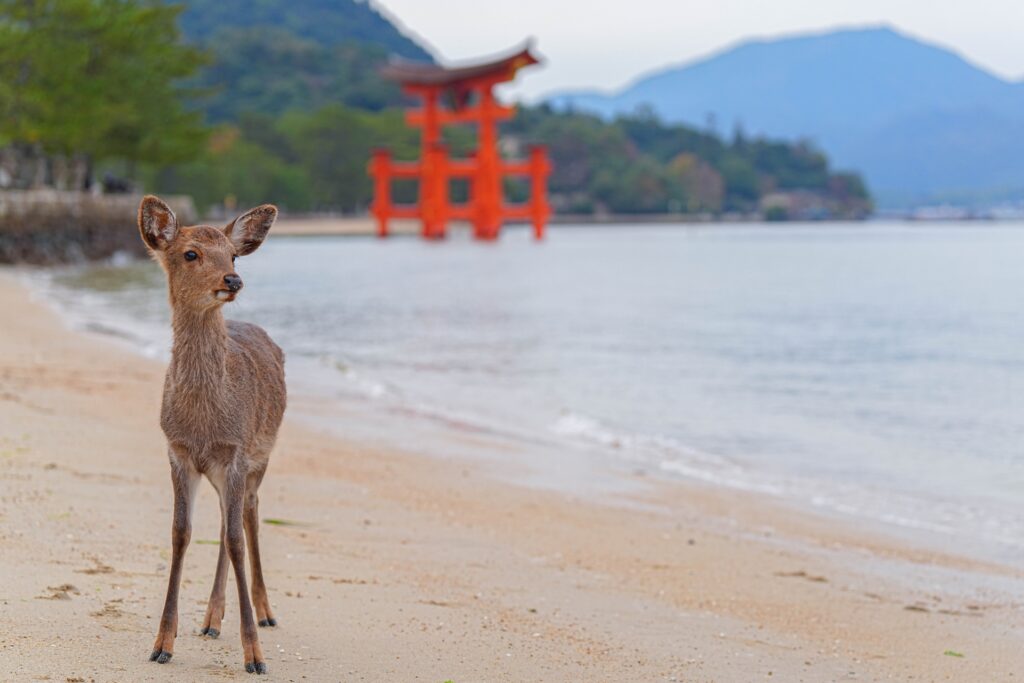
To access the island of Miyajima takes around 60 minutes from Hiroshima Station. Though outside the central city, it’s an extremely popular destination thanks to its famous shrine and seabound ‘torii’ gate, and offers visitors a good alternative to staying in the city. You’ll find a wide range of accommodation on the island, almost all of which is within easy walk of the ferry pier and shrine. Options include mid-size to large hotels, high-end ‘ryokan’ (traditional guesthouses) along with family-run ‘minshuku’ (basic guesthouses) and budget options. Busy during the day, staying on Miyajima is a great way to enjoy it at night and in the morning without the crowds of large tour groups. For more information including accommodation listings, see our ‘Miyajima Area’ hotel page.
HOW TO GET TO HIROSHIMA
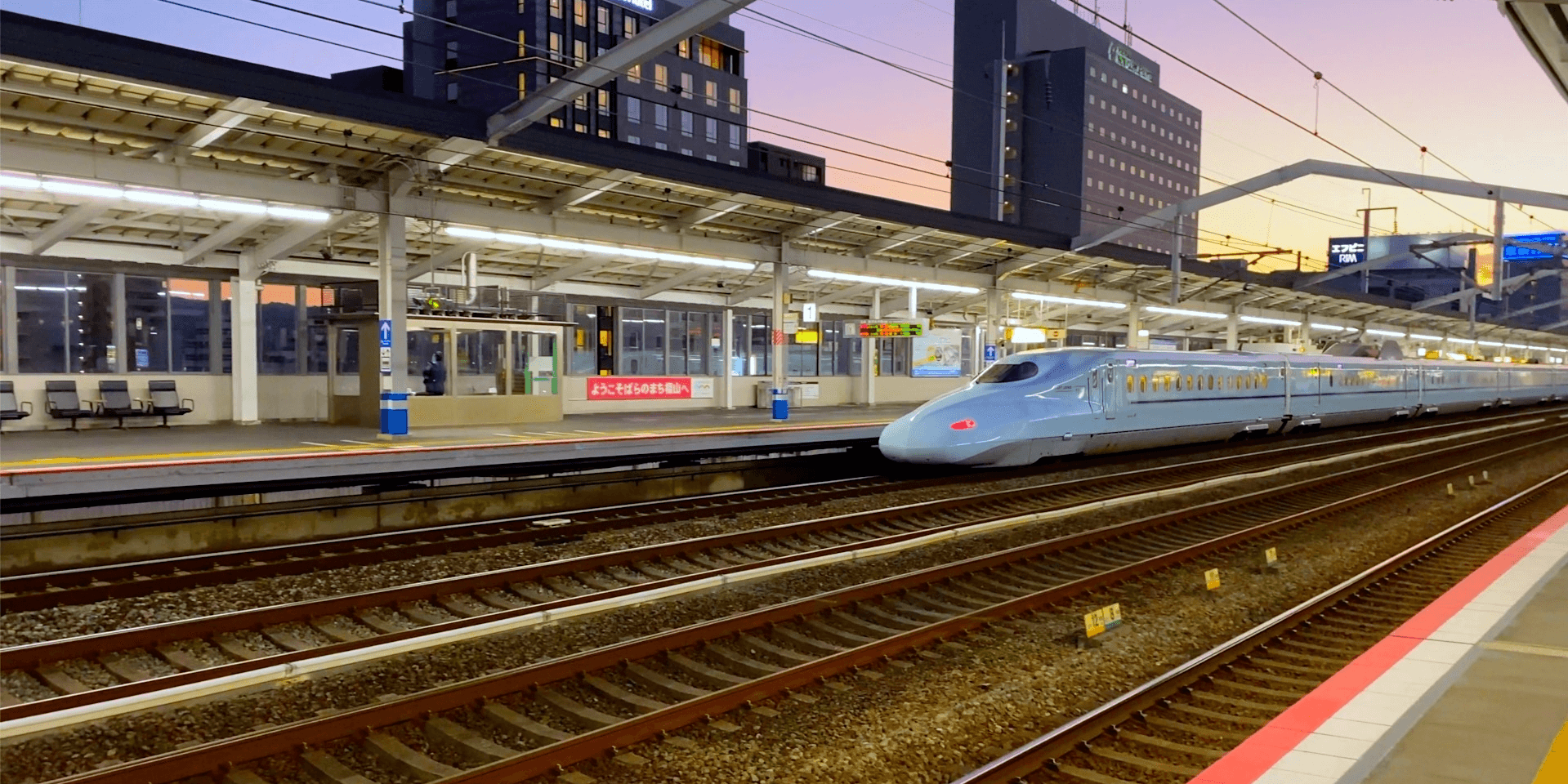
As a stop on the San'yo Shinkansen line, Hiroshima Station is the main access point of the city and wider region. Services run frequently throughout the day and once at Hiroshima Station, local train, bus and tram lines carry you onto the most popular destinations in the city and surrounding. Our ‘How to Get to Hiroshima’ page has just how to get there from popular starting points including Osaka, Kyoto, Tokyo and beyond.
PLAN YOUR VISIT TO JAPAN
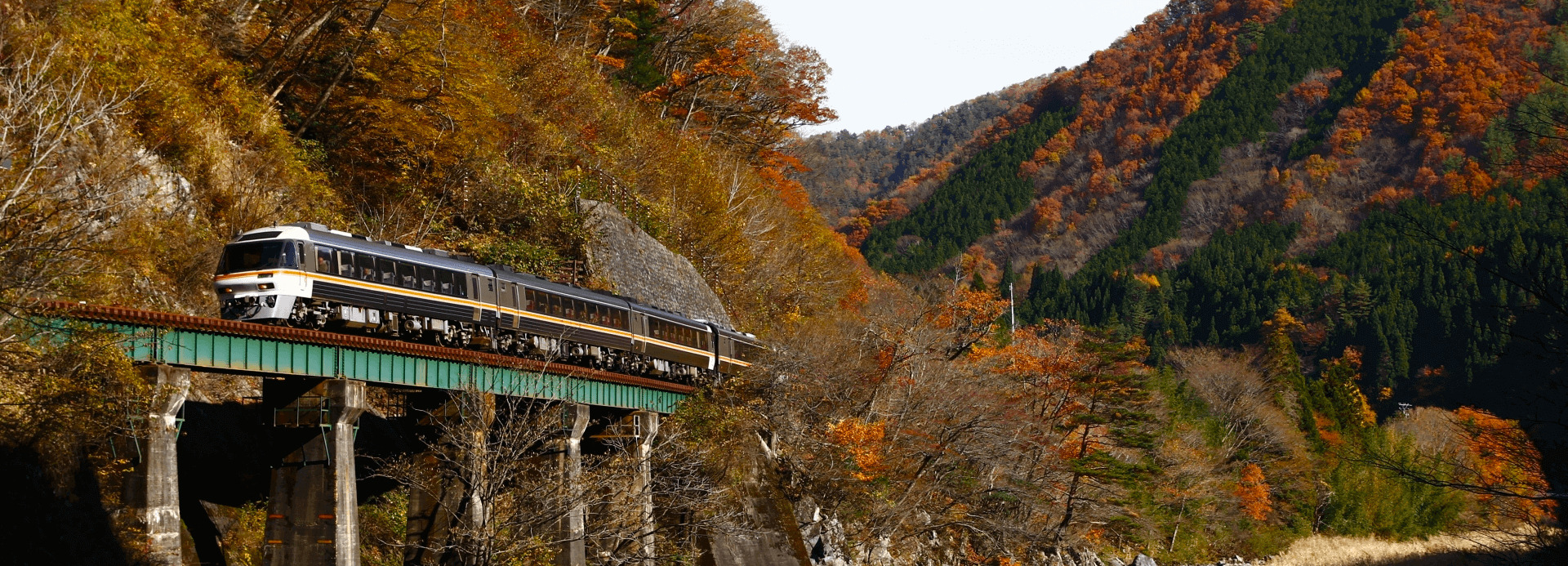

Heading to Hiroshima using the rail system is quick, easy and comfortable. Unfathomable in its size and efficiency, moving around the country by train opens-up all regions of Japan for exploration. Our ‘Plan Your Visit’ page has everything you need to know about visiting Japan – from tips on the best time to travel, times to avoid, entering and exiting the country, money matters, staying connected, accommodation, staying safe and healthy and plenty more to ensure that you get the most out of your time here.














